I won’t lie to you, 2 days in Kyoto is not enough.
BUT
It is enough to see the main sights and if you’re really willing to maximise your 48 hours in Kyoto (and maybe sacrifice some sleep along the way) it is possible to see a lot with a 2 day itinerary in Kyoto.
For context, I spent two days in Kyoto on my first visit in 2017 and while I saw most of what I wanted to see, I also knew I’d skipped a lot too.
But even on my second visit in 2023, I spent a week there and still felt the same – so you can really only do your best with the time you have!
After two visits to Kyoto, I’m going to try my best to give you a 2 day Kyoto itinerary which covers everything I think is worth seeing in that time based on two days and 2 nights in Kyoto.
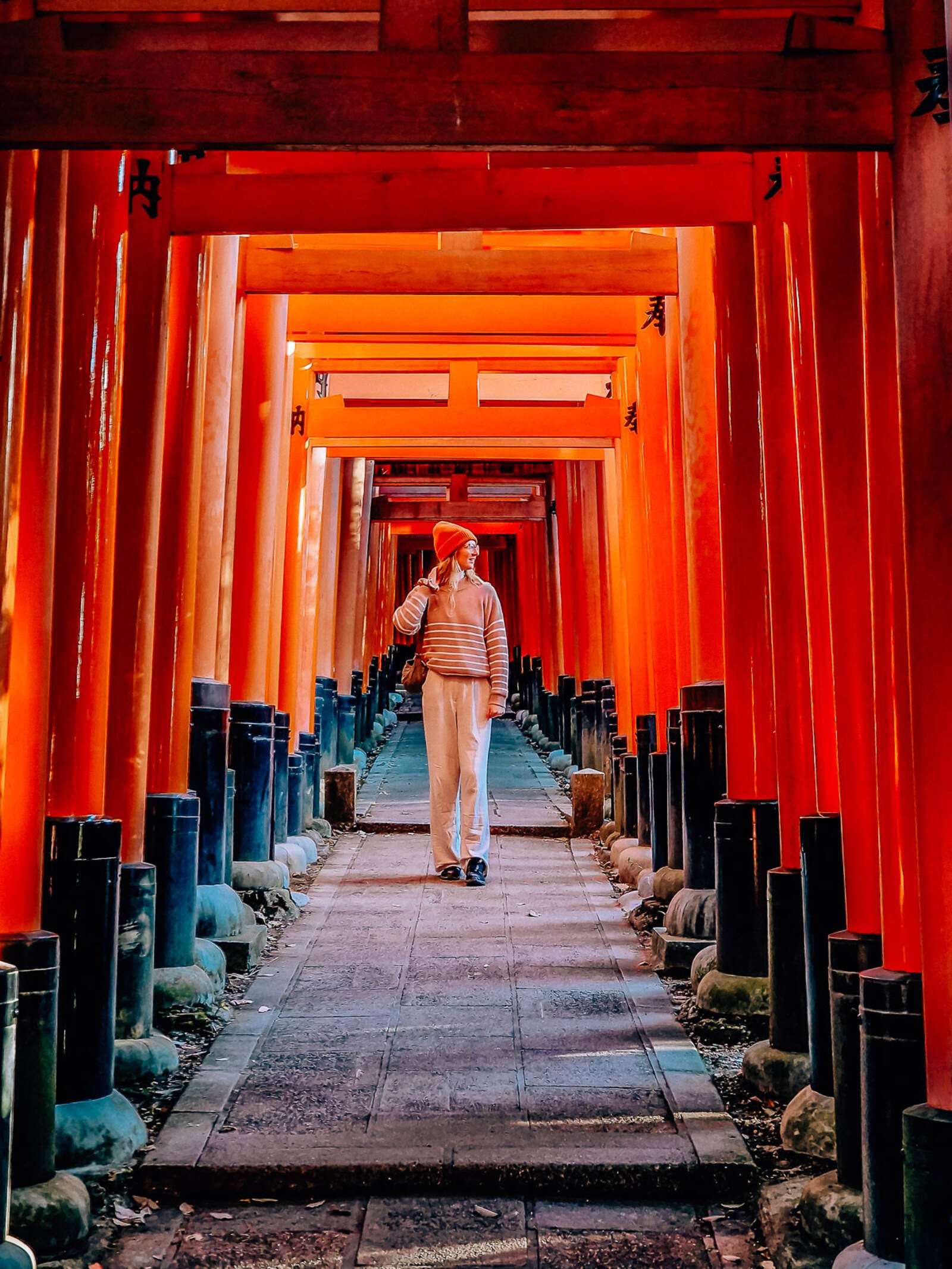
Need to start planning your trip to Kyoto ASAP?
Below are some of the top rated tours, hotels and recommendations for visiting Kyoto. Make sure to book ahead of time to ensure availability!
Top Experiences and Tours in Kyoto:
- Traditional Tea Ceremony Experience at a temple
- Full Day Kyoto tour of the city highlights
- rent a traditional Japanese Kimono
- Authnetic Sushi making cooking class
Top Hotels and Accommodation in Kyoto:
- Kyoto Machiya Fukune (highly rated traditional style)
- Good Nature Hotel Kyoto (beautiful hotel, convenient location)
- Hotel Seiryu Kyoto Kiyomizu (luxury hotel, amazing views of Gion)
Page Contents
ToggleFeatured Travel Deals
Top tips for your trip to Kyoto:
2) Buy a eSIM to get access to the Internet in Japan
2) Find bus tickets to get around Kyoto
2) Buy a Suica IC Card to get unlimited rides on JR local and rapid trains
How to get to Kyoto
If you’re arriving by air then Kansai International Airport is going to be your point of arrival. From here it’s 1.5 hours direct on the Haruka Line to reach Kyoto Station.
If you’re arriving from Tokyo by Shinkansen (bullet train), you’ll be coming into Kyoto Station on the Tokaido-Sanyo Shinkansen from Tokyo Station which takes just over 2 hours from Tokyo.
How to get around Kyoto
How to use the bus in Kyoto
By far the easiest way to get around Kyoto city is by bus. I usually find bus travel intimidating but it’s super easy in Kyoto thanks to the flat rate bus fare of 230 yen (£1.23) and the accuracy of Google Maps.
Plan your trip to KyotoNovember, 10Find Ticket
Most buses have the next stop in English as well as Japanese so you know when you’re coming to your stop. But if you happen to be on a bus that doesn’t have English I found tracking my location on Google Maps just as effective!
To use the buses in Kyoto, make sure you’re at the stop early as the buses are very on time! You board the bus through the back door and take a ticket from the machine by the door.
When you get off, exit at the front, put your ticket in the machine and drop your change into the hole. It’s best if you have exact change. If you don’t there is a change machine that takes 1000 yen notes – just be quick so you don’t hold up the bus!
For reaching both Arashiyama and Nara while you’re in Kyoto, the quickest way to reach both is by train. Again local trains are very easy to navigate just using Google Maps.
You can also book a Suica IC Card online here for unlimited rides on JR local and rapid trains – it’ll save you time and effort during your trip.
How many days in Kyoto?
Ideally I would spend a week in Kyoto to see the city and take a couple of day trips to the surrounding area. However Kyoto is also an expensive city which can make a longer stay more cost prohibitive.
However with a shorter schedule, it’s definitely possible to see the main sights with a short itinerary in Kyoto such as 48 hours or a long weekend in Kyoto.
Is 2 days in Kyoto enough?
It’s not enough to see everything but it’s enough time to see the main sights and explore one of the most famous cities in Japan and experience more of the traditional city in contrast with Tokyo or Osaka.
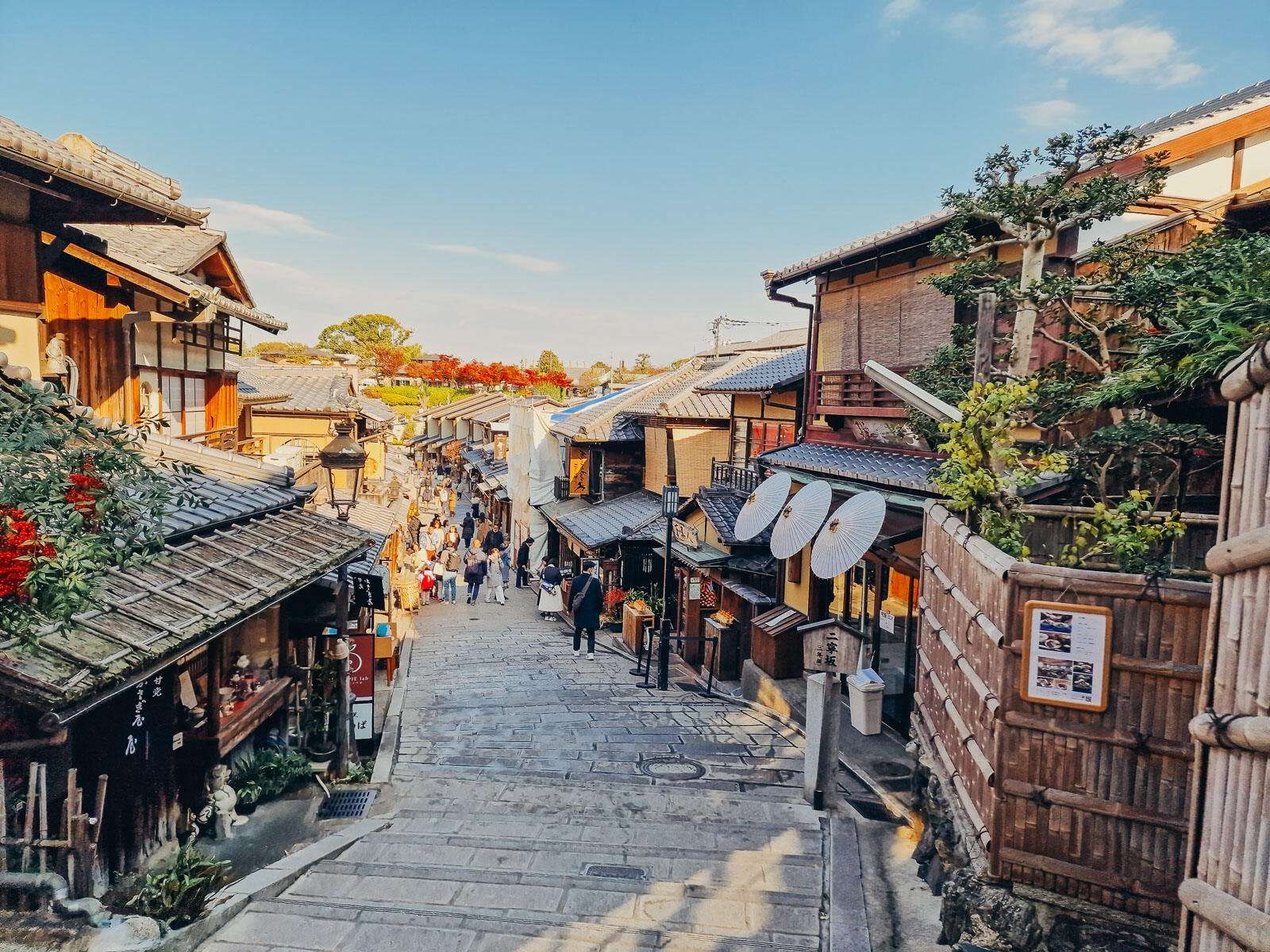
Kyoto 2 day itinerary: where to stay
This is personal preference depending on your budget and if you’d like to experience a traditional Ryokan.
However we found staying in Shijo extremely convenient for our Kyoto 2 day itinerary as we were almost right next to Shijō-Ōmiya Station which is where the train to Arashiyama departs from (the first early morning excursion on this itinerary).
Shijo also has several bus stops which are a direct route into Gion – Kyoto’s traditional old town area.
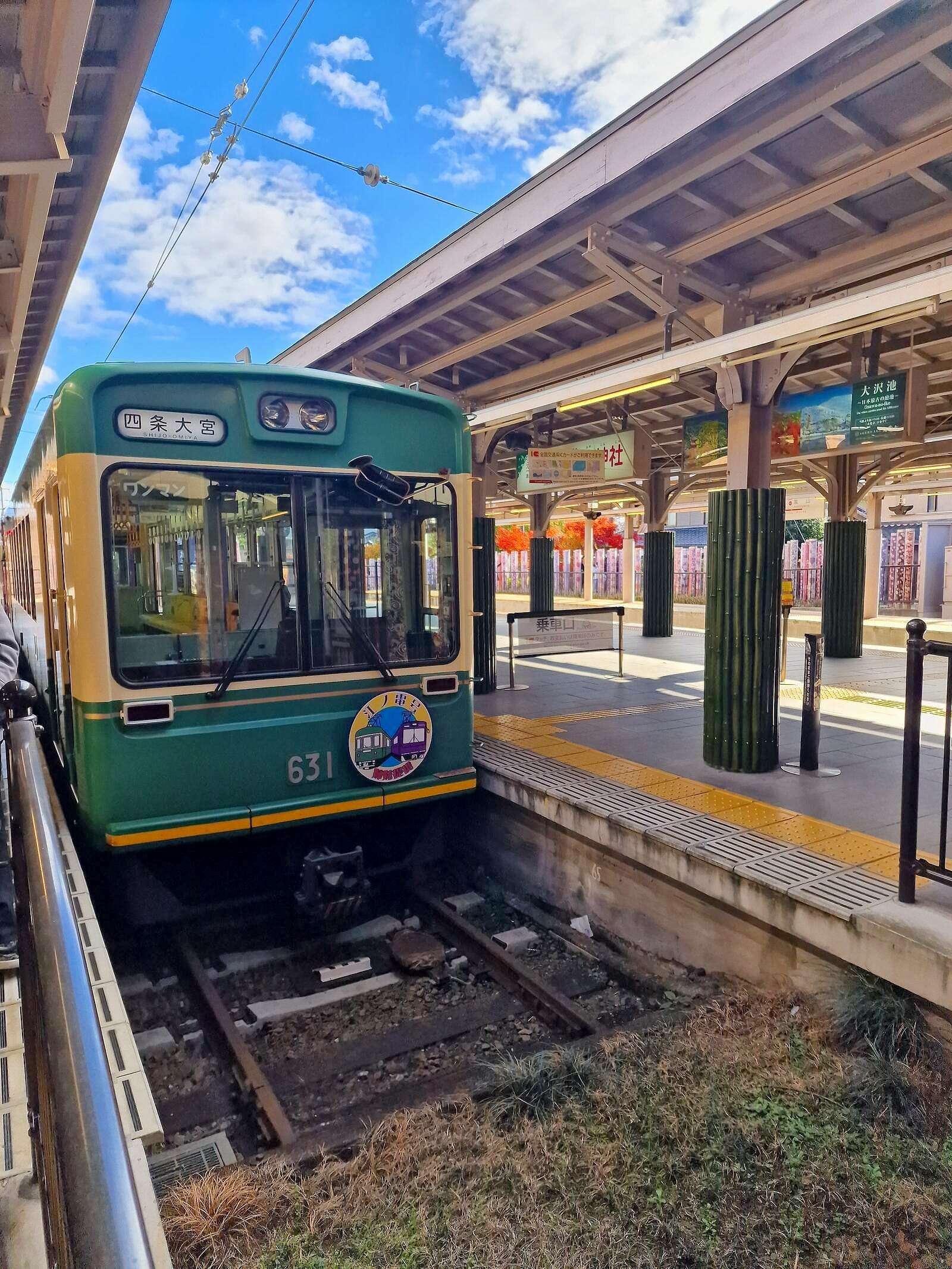
Hotel options in Shijo
Luxury Kyoto hotel – Agora Kyoto Karasuma
Mid-range hotel – Hotel M’s Plus Shijo Omiya
Hotel Meldia Shijo Omiya (where we stayed)
Budget-friendly hotels – The Pocket Hotel Kyoto
Traditional Japanese hotels in Kyoto
Kyoto Machiya Fukune
Rinn Gion Yasaka (amazing location)
Best hotels in Kyoto (that we also considered for our stay)
Good Nature Hotel Kyoto
Noha Kiyomizu Kyoto
Kyoto Granbell Hotel
Hotel Seiryu Kyoto Kiyomizu
The “see-it-all” 2 days in Kyoto itinerary
Day 1: Arashiyama, Gion and Temples in Kyoto
AM – Arashiyama Bamboo Forest and Kyoto temples
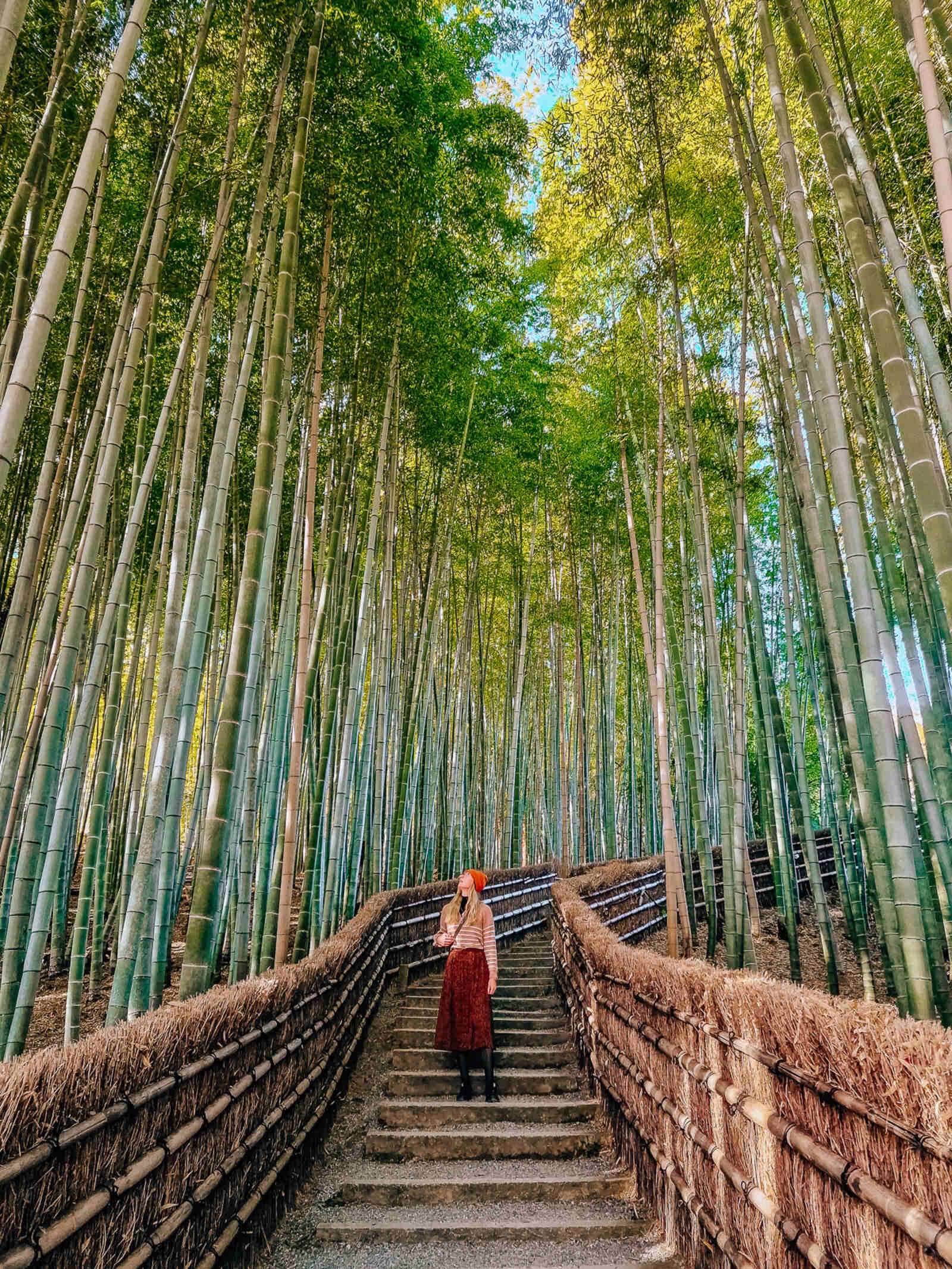
Start your day as early as possible by taking the train to Arashiyama.
The Kyoto bamboo forest is world famous and depending on how important photos are to you, if you want to see Arashiyama without the crowds, I would suggest going as early as 5-6am.
However if the early start doesn’t sound appealing to you, I would still suggest starting your day at 8am.
If the mornings are still too dark or you don’t make the early start, don’t worry – I’ve got a secret tip to find a Bamboo grove nearby with no people!
There are two ways to get to Arashiyama and the one you pick depends on where you’re staying in Kyoto.
1. If you’re staying near Kyoto Station, take the JR San-In Line 7 stops from Kyoto Station to Saga Arashiyama station (runs every 20 minutes, costs 240 yen)
2. If you’re staying near Omiya, take the Randen Line 12 stops from Shijo-Omiya Station to Arashiyama Station (runs every 10 minutes, costs 250 yen)
Depending on whether you arrive at Arashiyama Station or Saga-Arashiyama station, it’s a 10-15 minute walk to the Arashiyama Bamboo Forest.
The Arashiyama Bamboo Forest is free to visit and you can follow Google Maps to get there. Follow the trail through the Bamboo Grove until you reach the other side. It’s only short and will take you less than 10 minutes to walk through – just allow time for pictures!
There’s also so much more to see in the park area. You can take the Sagano Romantic Train through the Rankyo Gorge. This is a scenic train ride with open sides and is definitely best enjoyed when the cherry blossom is in bloom or the autumn foliage is out. It costs 880 yen each way and takes about 25 minutes. Find more details and the current schedule here. NOTE: the train does not operate in winter
TIP: Don’t miss the Arashiyama Observation Deck for a free viewpoint of the Gorge. The surrounding Arashiyama Park Kameyama area is a famous spot for cherry blossom in spring and foliage in the fall – so make some time to wander around.
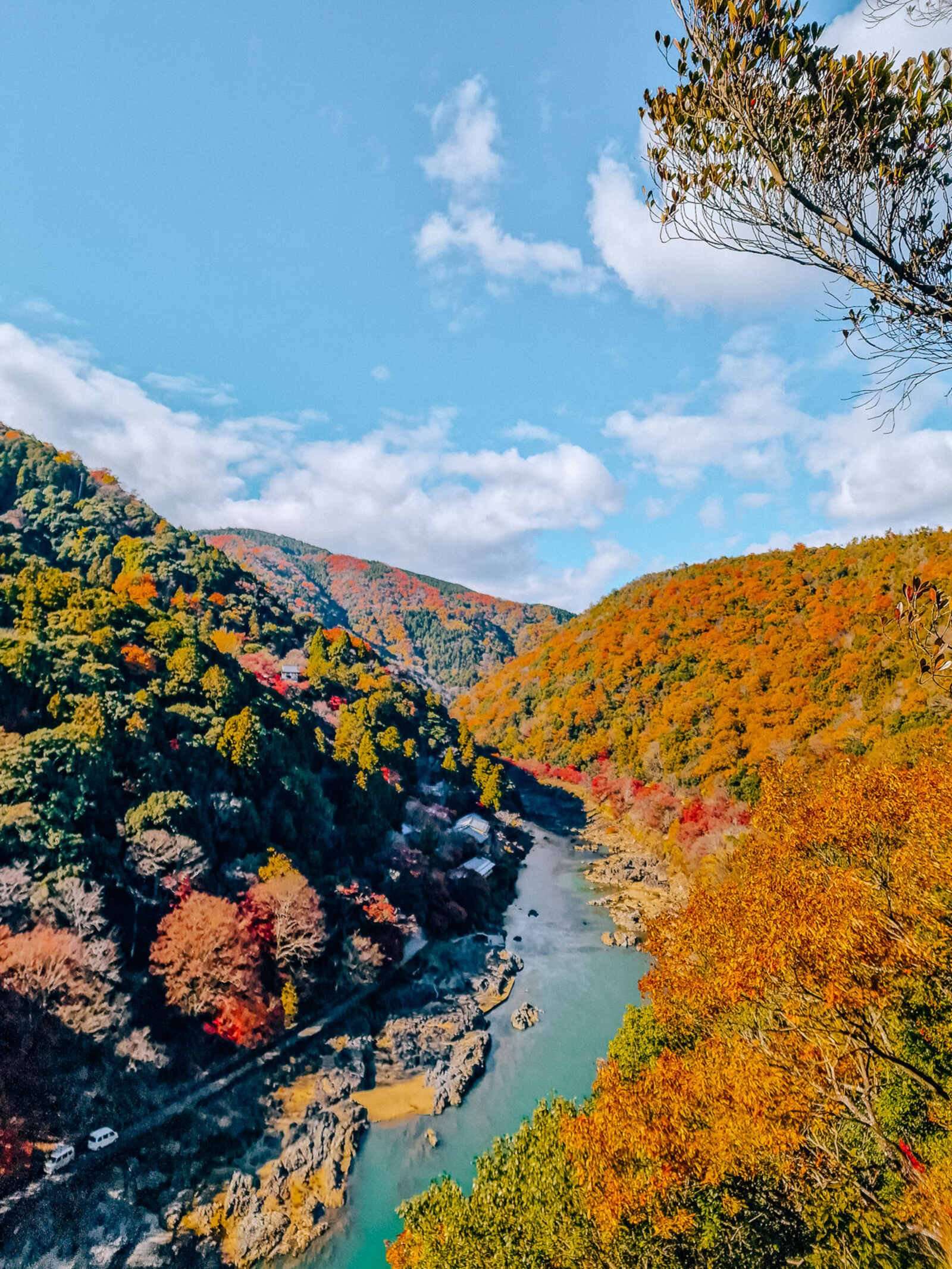
You can also make your way down to the river and you can also take a boat ride here, although it can be pretty pricey if there’s only one or two of you in the boat – 4000 yen.
The alternative bamboo grove…
I promised an alternative, lesser known bamboo grove and it’s much shorter than the famous Arashiyama Bamboo Forest but I visited at around midday in autumn season and NO ONE was there!
Adashino Nenbutsuji is a Buddhist Temple which is just 20 minutes walk from Arashiyama Bamboo Forest and the walk itself is beautiful. It takes you through the traditional village area of Arashiyama, away from the crowded main street.
The traditional houses are stunning, there are lots of local craft stores, think wooden decor or ceramics. The streets were so peaceful and such a contrast from the busy bamboo forest and the main street in Arashiyama! – I highly recommend it just for this reason!
Adashino Nenbutsuji was one of the highlights of my 2 days itinerary in Kyoto.
It costs 500 yen to visit. Follow the one-way trail through beautiful Japanese gardens, the autumn foliage when we visited was SPECTACULAR.
The temple itself is famous for the over 8000 Ranken stone statues which are gathered in the centre of the temple. These represent lost souls (people without graves) and while you can take pictures of them from outside, it’s asked that if you go into the grave area, you do not take pictures.
The hidden bamboo grove is at the back of the temple complex (diagonally opposite the entrance you came in)
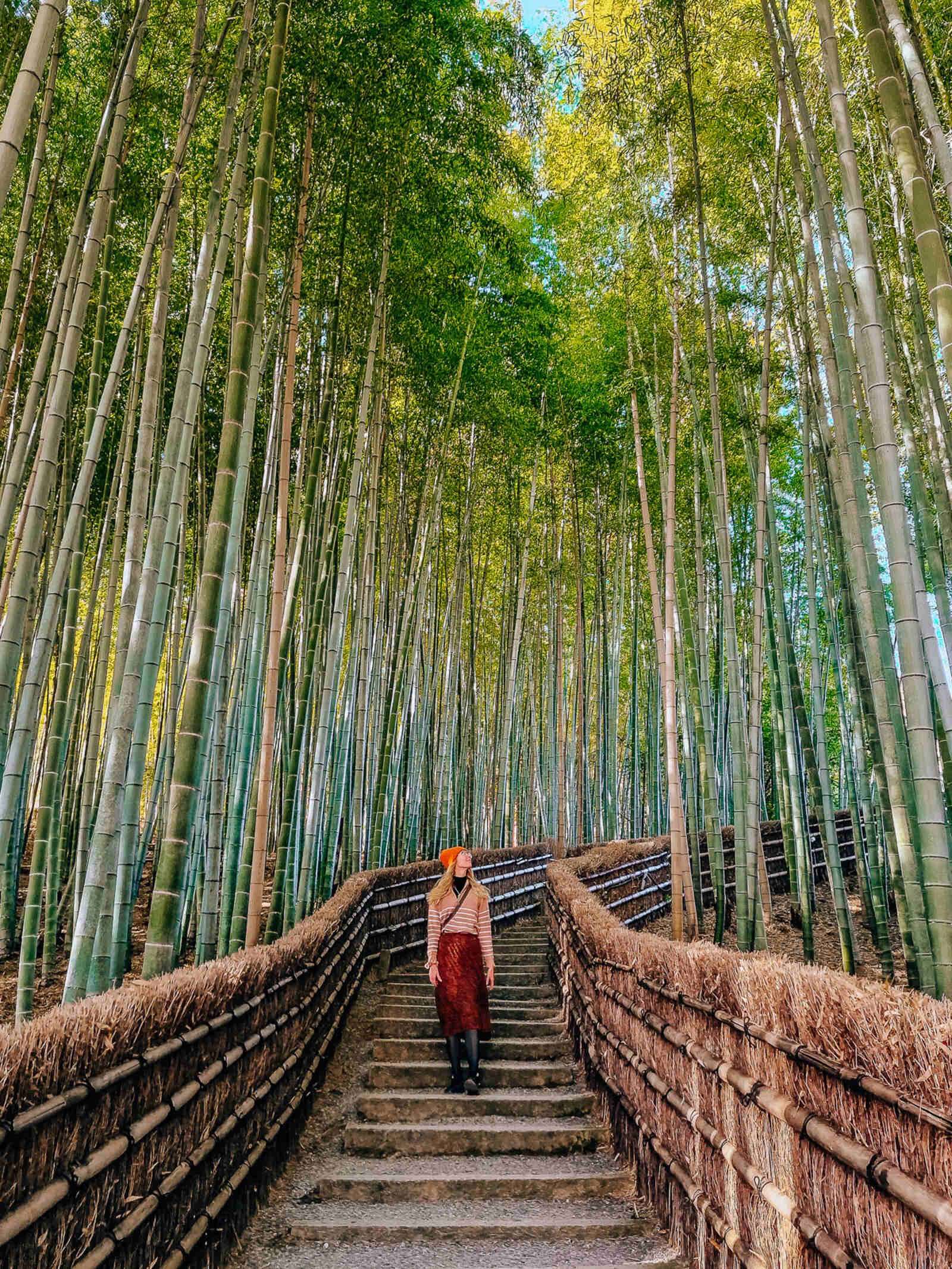
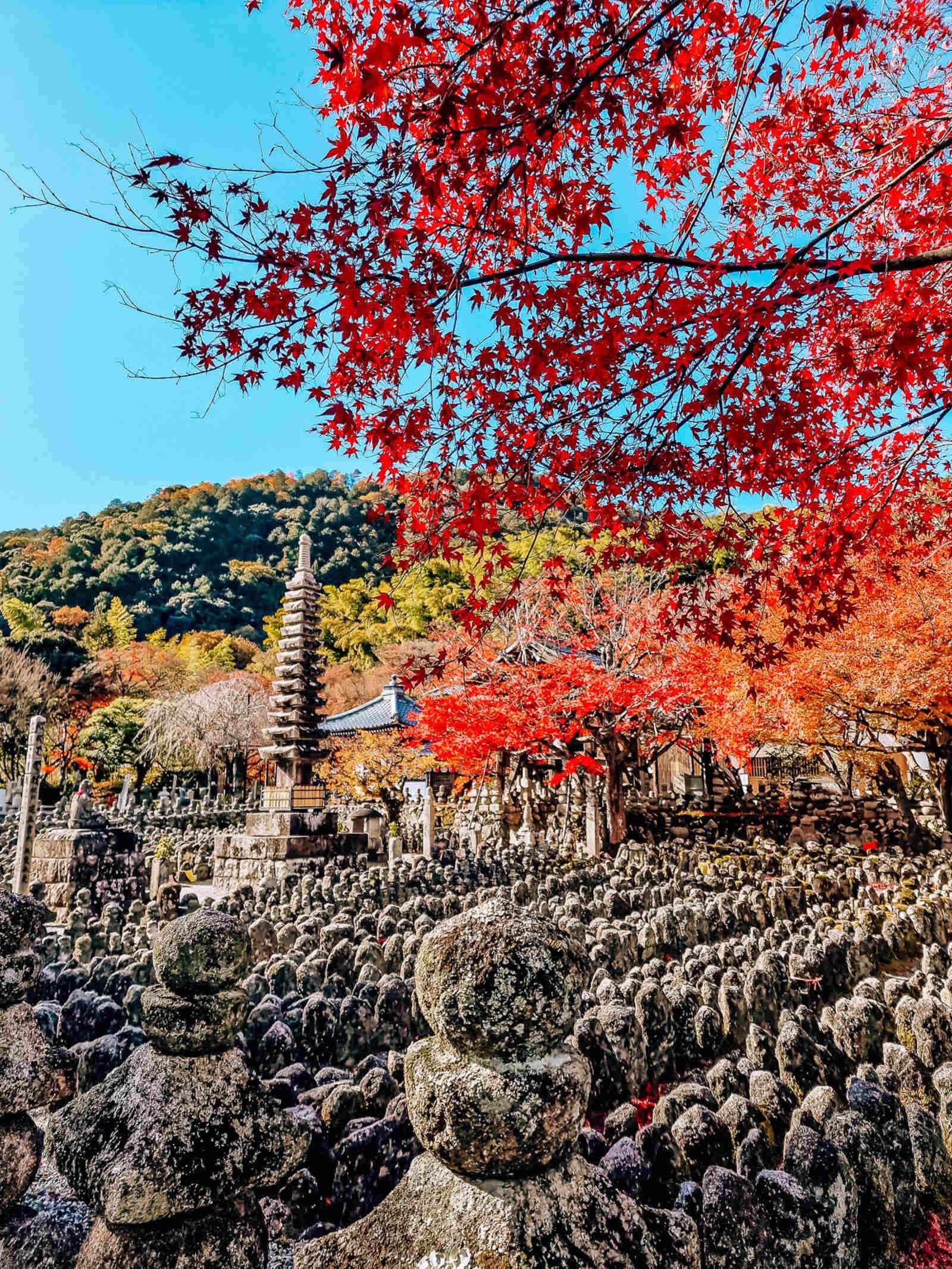
It’s only short but as you can see – there is no one else around!
I honestly expected to spend about 10 minutes at this temple and I think we spent 45+ minutes exploring it – it’s so beautiful and definitely a Kyoto hidden gem!
After this stop, head back to Arashiyama main street and use this chance to grab a bite for lunch. There are loads of food stores here selling traditional Japanese snacks and street food. We had to try the fresh meat pies and the Green Tea parfait ice creams!
Then hop on the train back to Kyoto for your afternoon adventures.
PM – visit Gion and the famous Kyoto Shrines and Temples
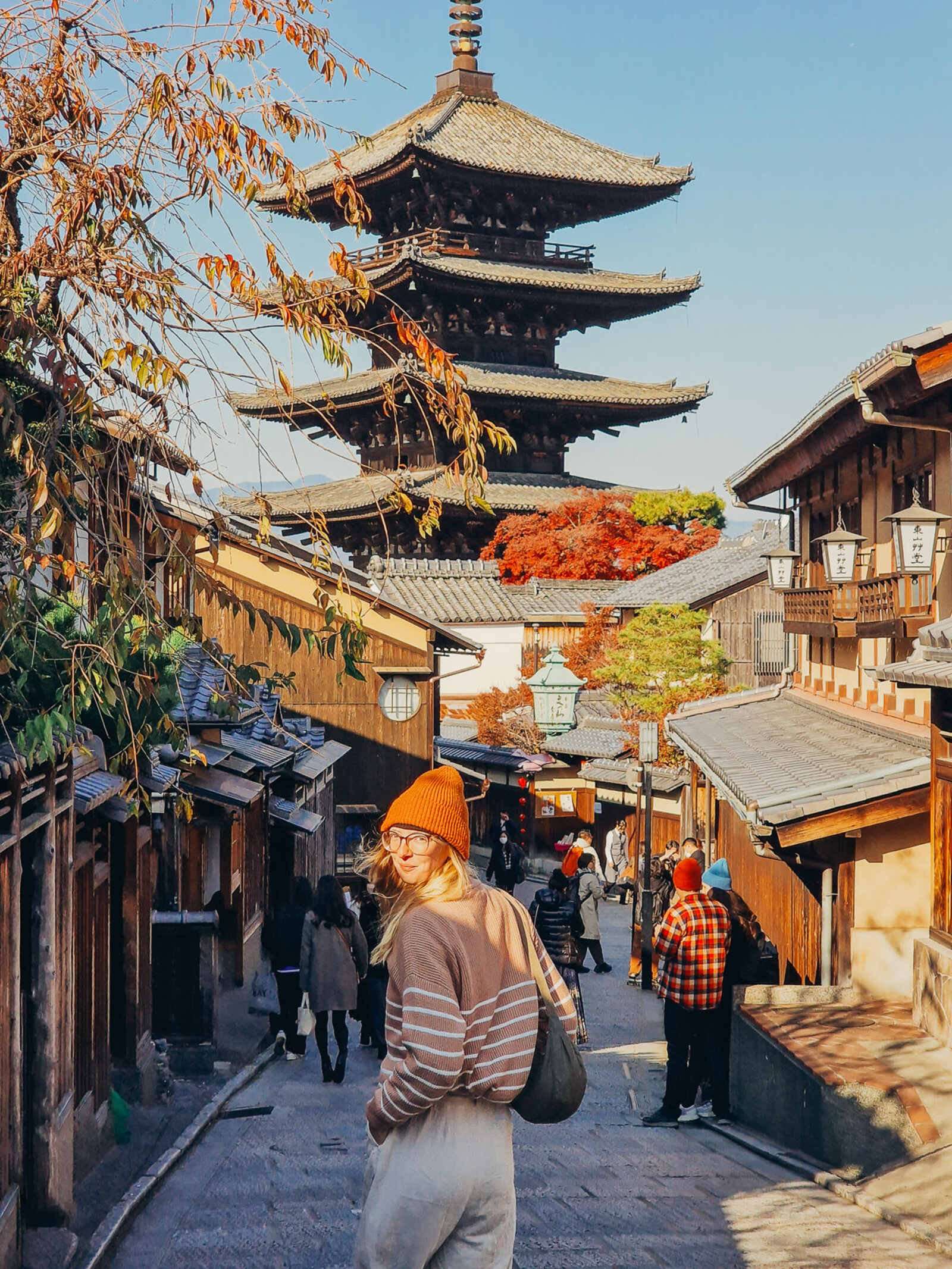
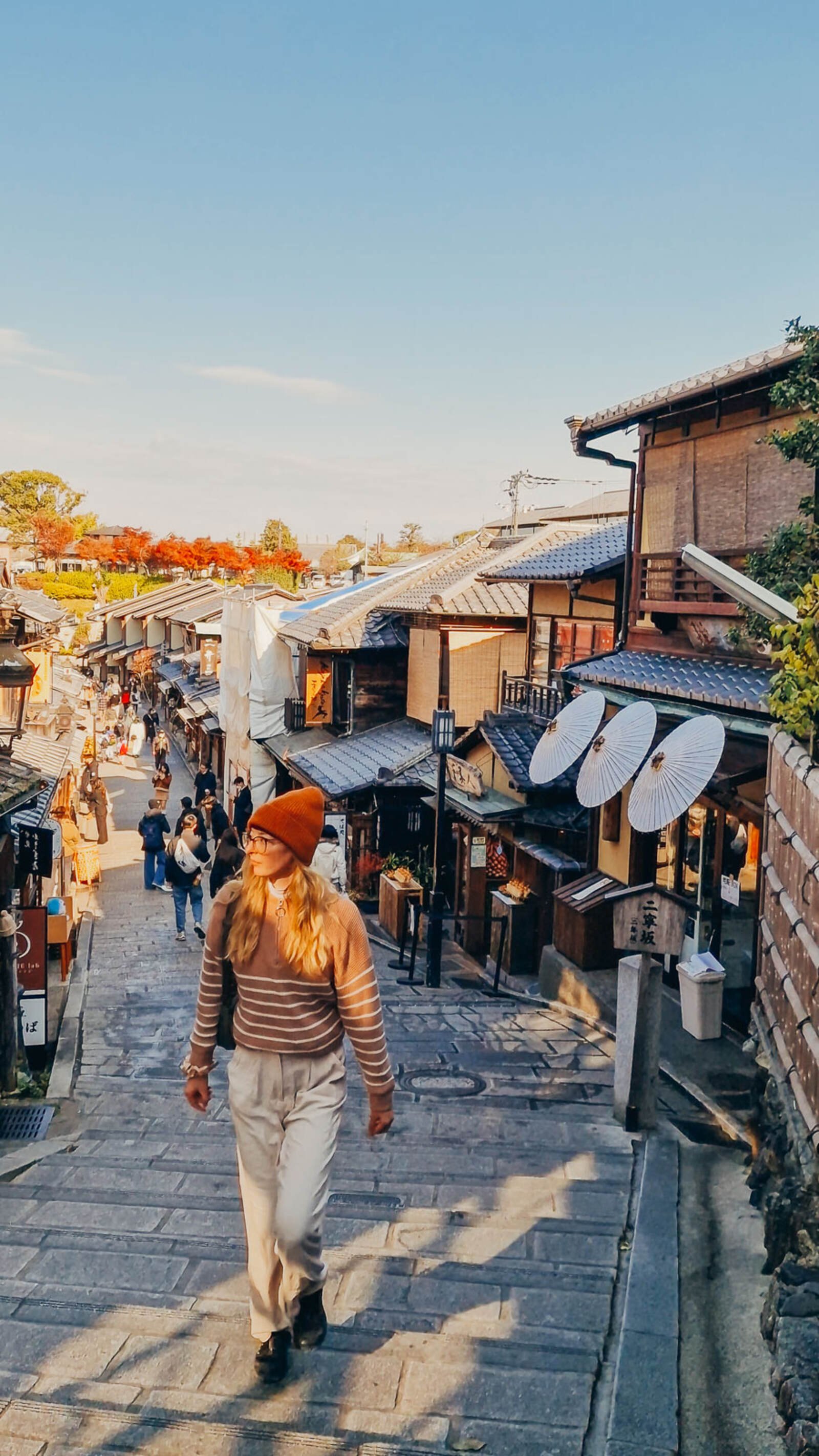
No 2-day Kyoto itinerary will be enough to see all the stunning temples in Kyoto – we spent 5 days there at one point and we still didn’t see every beautiful temple we wanted to! Although there are over 3000 temples in Kyoto, so don’t worry if you only manage to see a handful!
Gion is the ancient district of Kyoto, its history dates back to the 15th century Sengoku period and is famous for traditional teahouses, winding cobbled streets and Japanese Geisha.
Be prepared for how busy Kyoto Gion will be. In 2017 it was so peaceful and not busy even in the cherry blossom season. Then in the 2023 autumn season I was shocked by the crowds!
But don’t worry, there’s time early in the morning tomorrow if you want to explore Gion without the crowds.
Spend the afternoon visiting temples which are all within easy walking distance of each other in the Kyoto Old Town area. Here are the ones I would suggest:
Kiyomizu-dera – 400 yen entry fee
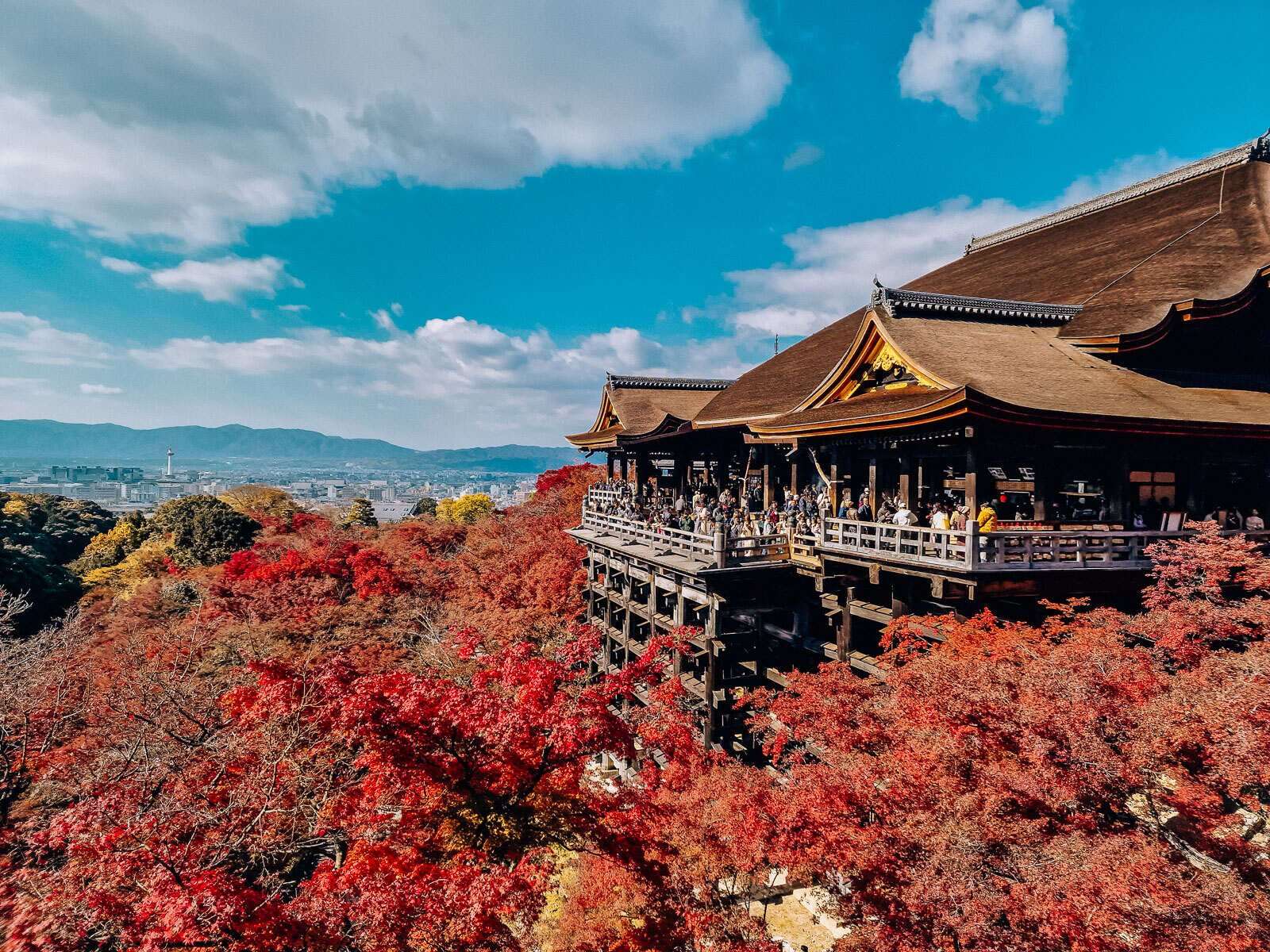
This is one of the most famous Buddhist temples in Kyoto and the iconic views from the terrace here are some of the most photographed views in Kyoto.
I recommend starting with this one as it’s a bit of an uphill walk, around 10 minutes from the start of Gion. It costs 400 yen to visit and the temple itself is held up with 13-metre high wooden stilts, leaving it perched on the side of Mount Otowa with spectacular views of the Kyoto skyline and mountains. There are both cherry blossoms here in the spring and autumn foliage in the fall.
Yasaka Kōshin-dō Temple – free
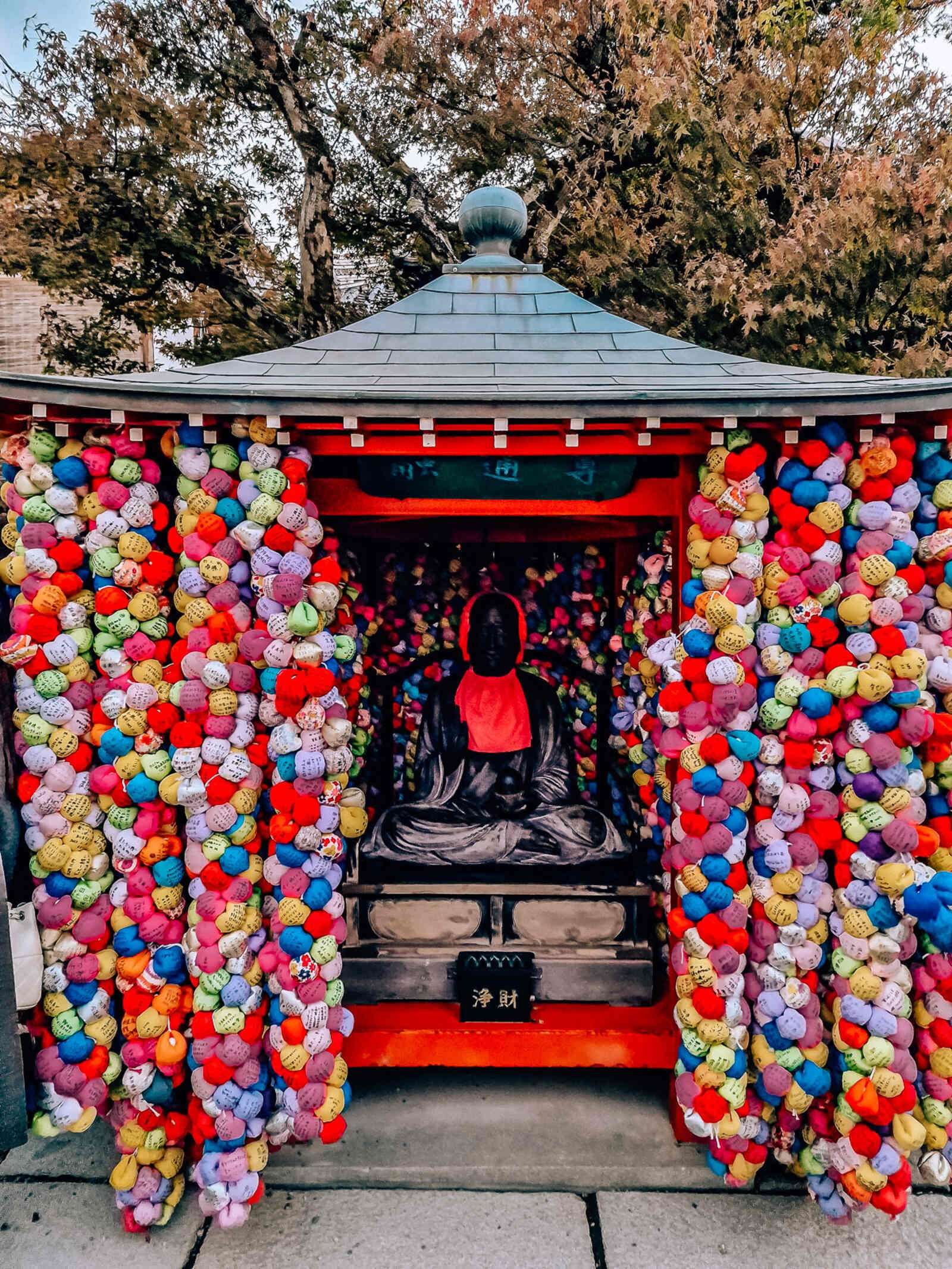
This is a fun temple to visit in central Gion on your way to other temples. It’s small and free to visit but is filled with thousands of colourful cloth balls representing kukurizaru. It’s the temple of the three wise monkeys (see no evil, speak no evil, hear no evil) so definitely worth a quick stop!
Kōdaiji Temple – 600 yen
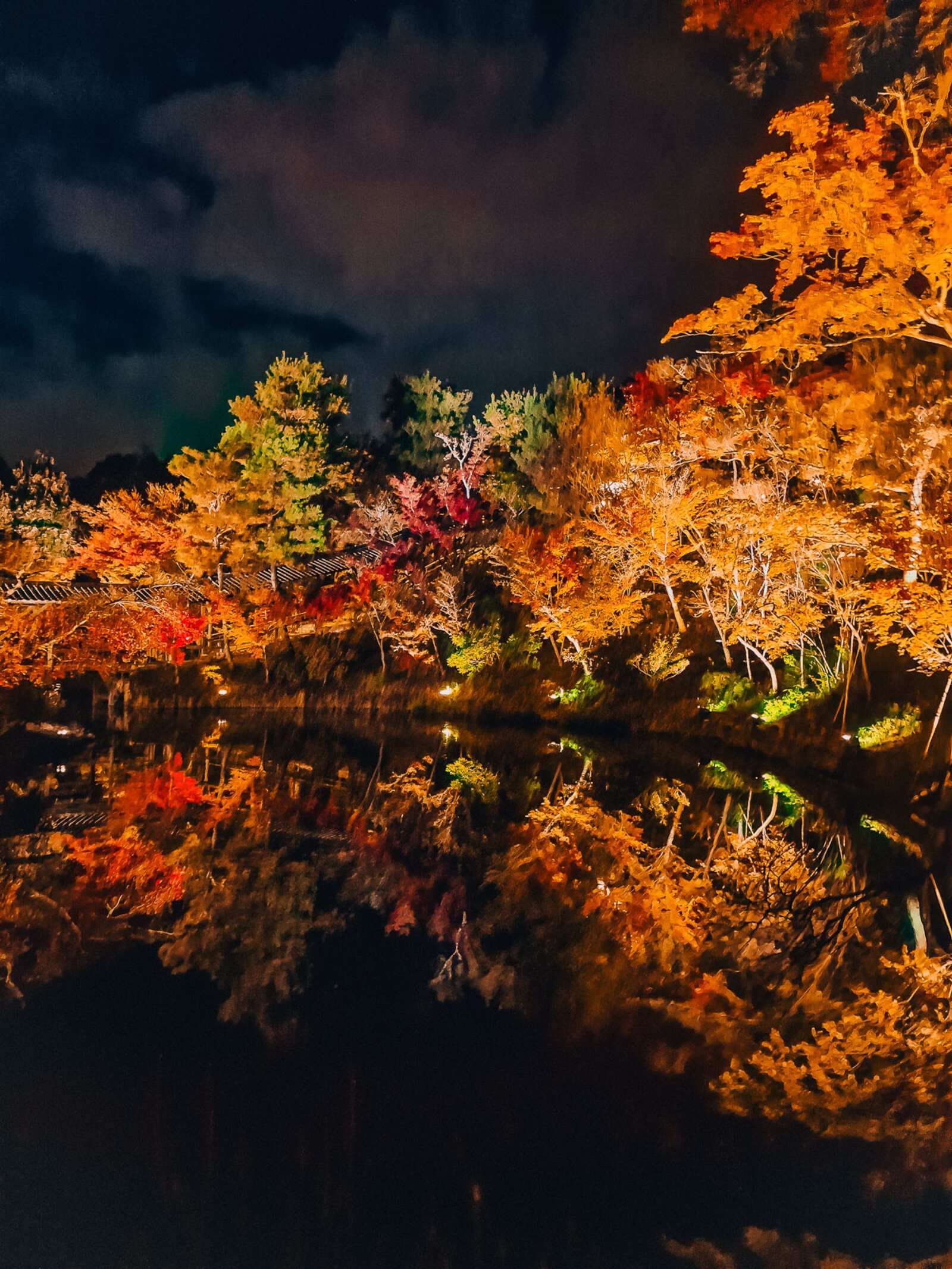
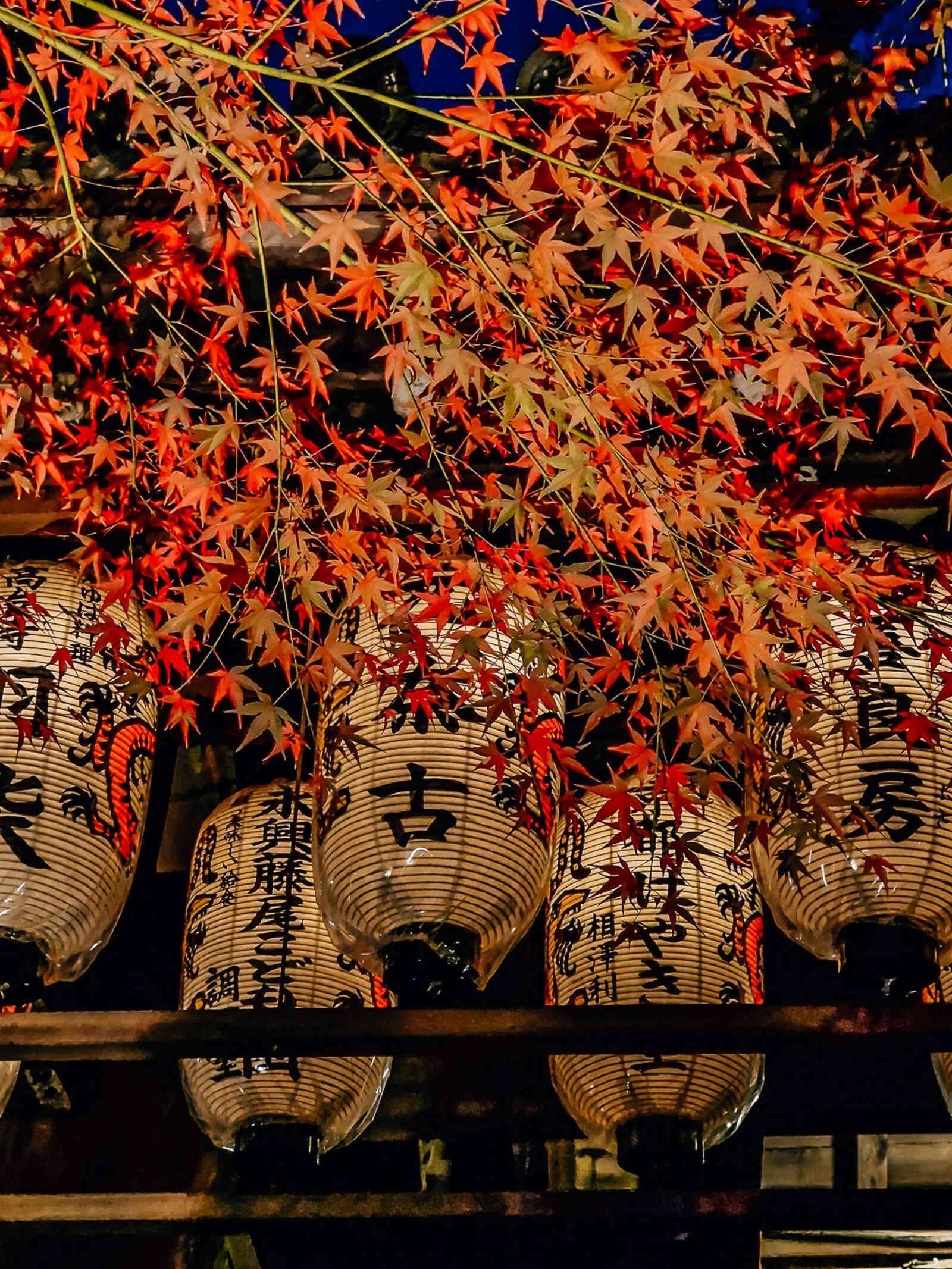
Not only is this a spectacular temple complex, but depending on the time of year, you might want to save this one until after dark as they also host seasonal light festivals.
- In mid-March to early May the cherry blossoms are lit in pastels and zen gardens are illuminated as you walk around the trails
- In late-October until early-December the autumn foliage is lit up in dramatic red, orange and yellow hues with a musical sound track as you follow the trails.
TIP: It doesn’t cost any more to see the light shows, entrance is still 600 yen, but I would recommend queuing up early (5pm) because the queue was long, although it did move fairly quickly!
Yasaka Shrine – free
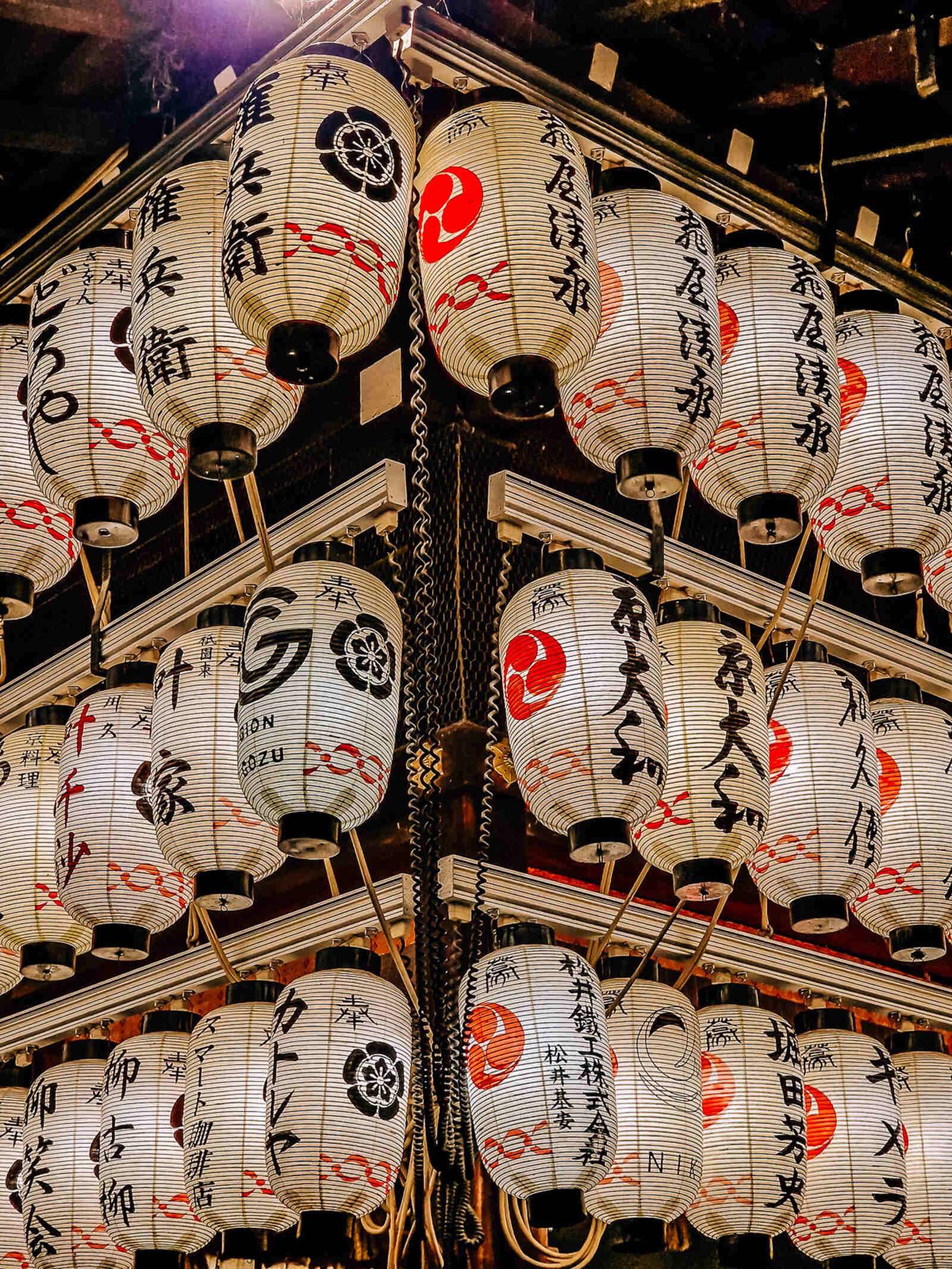
The famous Shinto shrine you see as you approach Gion. This is beautiful to visit in the day when you see lots of people dressed up in traditional kimonos.
But also at night when the wall of lanterns is lit up.
Late afternoon – visit Fushimi Inari Shrine
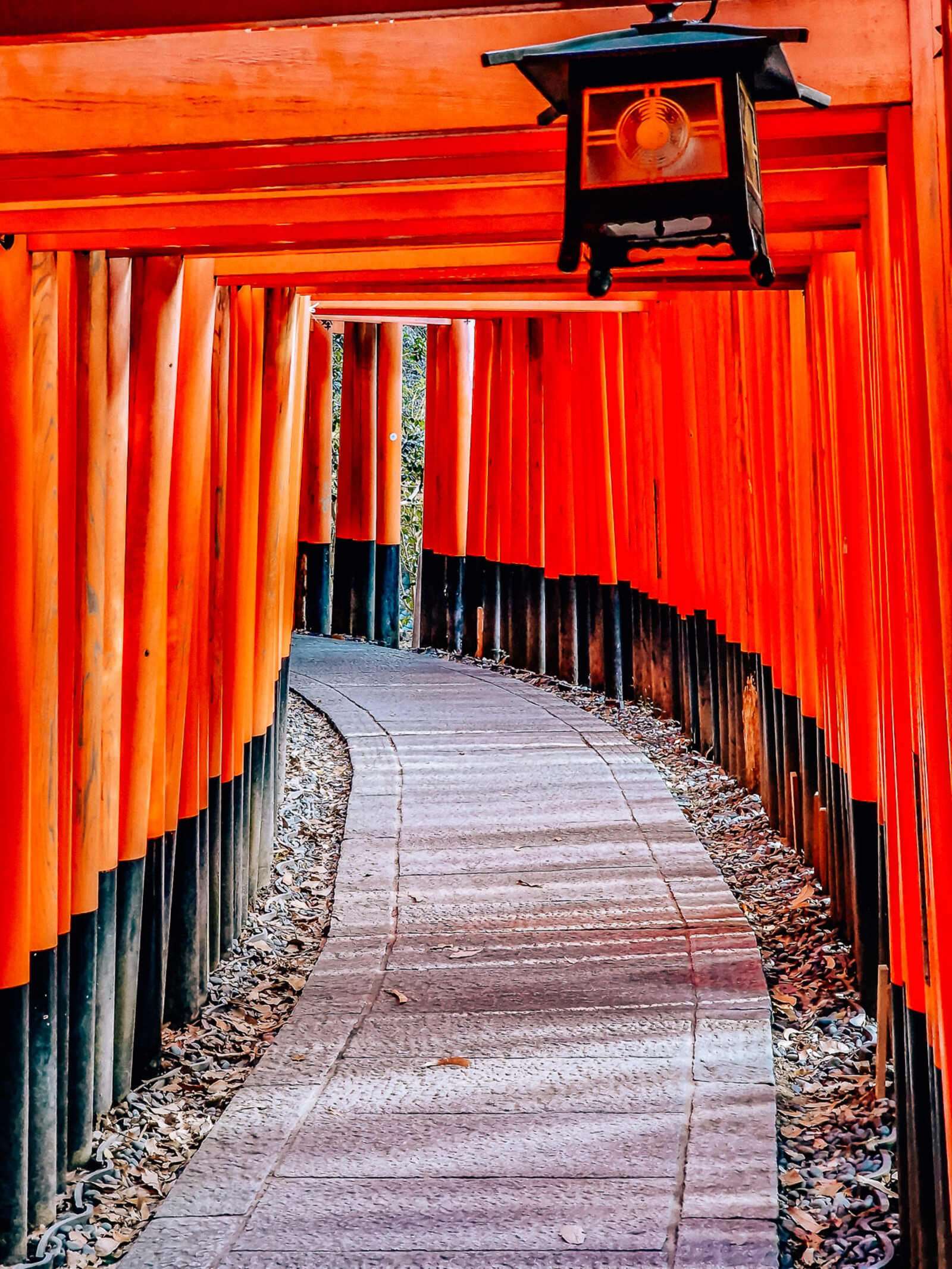
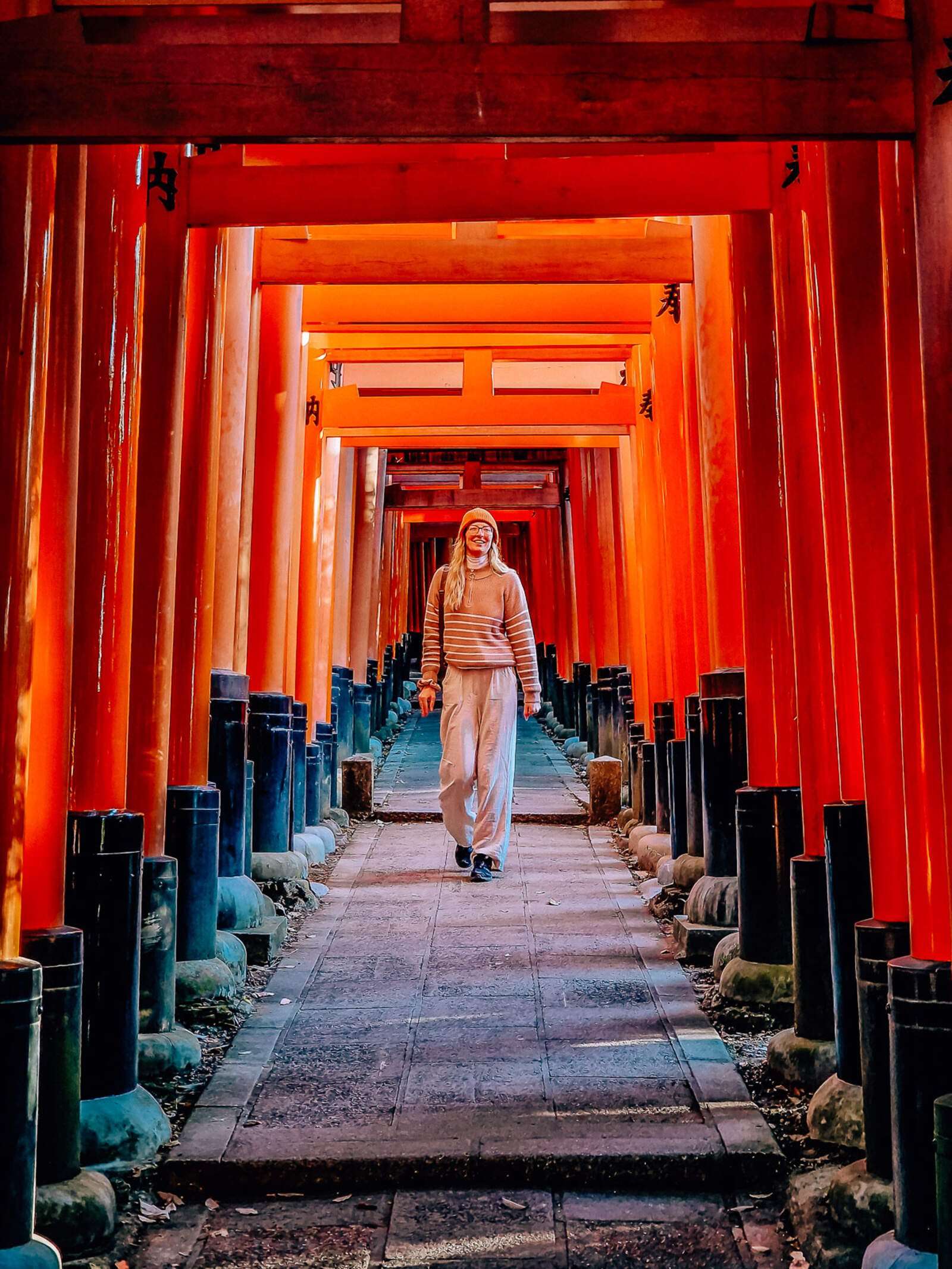
You will read lots of Kyoto travel guides and itineraries which tell you to get here at the crack of dawn to avoid the crowds.
That isn’t necessary. You just need to keep walking beyond the crowds.
The full Fushimi Inari Hike is around 4km. There is a trail to the top of Mount Inari and then several walking trails all around the peak.
Most people only visit the first 200-500 metres of the trail to see the famous path of hundreds of torii gates. But there are hundreds, probably thousands of torii gates which line the path the whole way up the mountain.
So as long as you have a decent fitness level and don’t mind walking a little bit further than 95% of the people that visit here, you can easily experience the spectacular thousand torii pathway in the peaceful forest, without loads of people around.
It’s up to you how far you want to walk, we did the whole trail and were back at the bottom of the mountainside just after sunset. We were up there for around 3 hours in total and it was beautiful, serene and absolutely worth the hype as one of the most popular shrines in Kyoto.
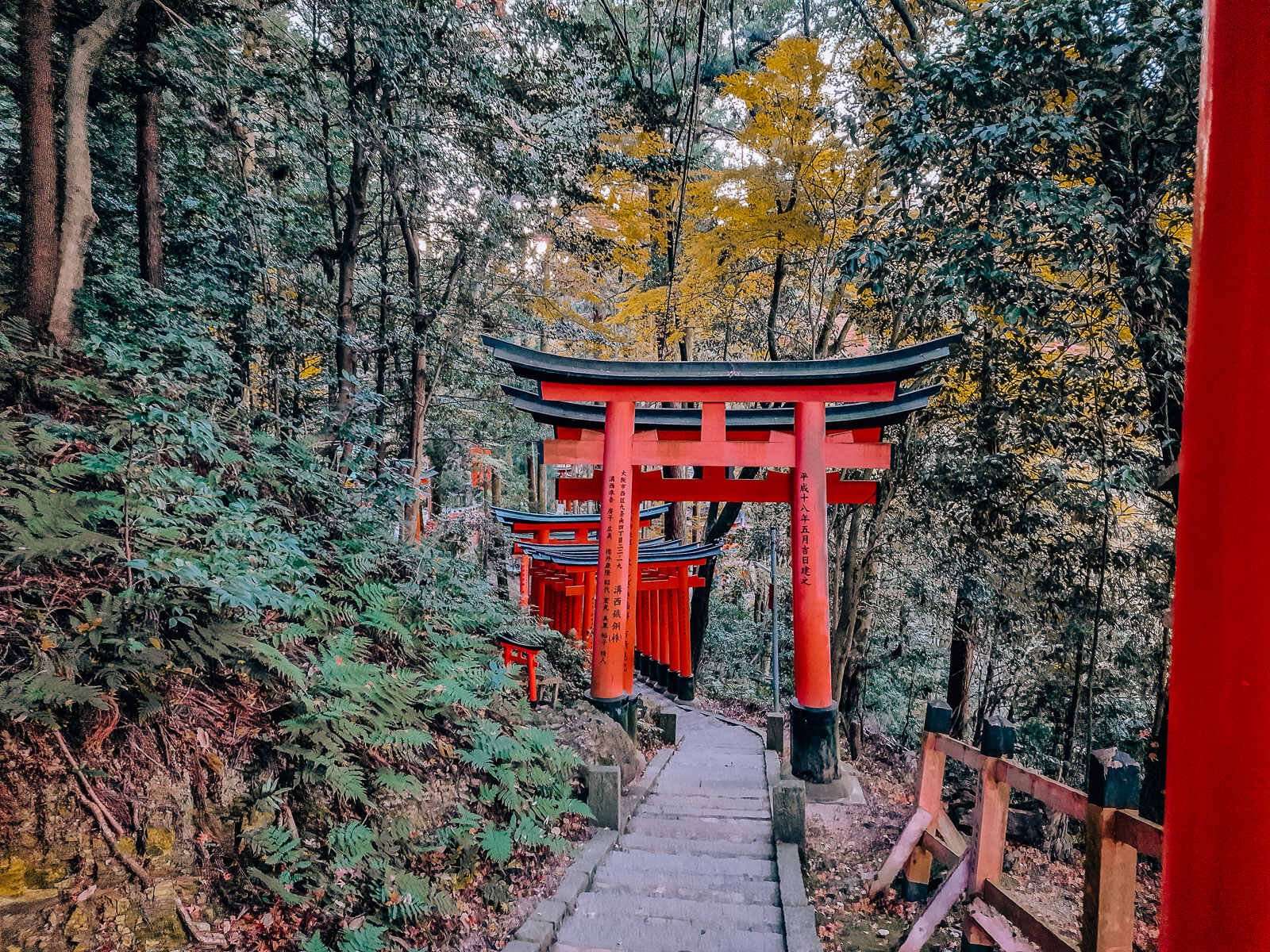
Dinner – best places to eat in Kyoto
We loved the street food stand outside Fushimi Inari Taisha and grabbed a snack of takoyaki ( battered and fried balls filled with diced octopus)
Here are some of our favourite places to eat in Kyoto if you’re looking for Kyoto restaurant inspiration:
- Wajoryomen Sugari for tsukemen ramen (the type where noodles are served separately and you dip them into the ramen broth)
- Kyoto engine ramen (good for a modern take on ramen with a creamy broth and they also have vegan and gluten-free ramen options)
- Gyoza ChaoChao (epic gyoza restaurant)
- Tendon Makino Kyoto Teramachi (for Tempura)
- Nishiki Market (one of the top things to do in Kyoto is to see this market, there’s lots of food stalls, vintage stalls and places to eat)
Alternatively, you could make your own dinner with an authentic cooking class in Kyoto. Check out this Udon and Sushi cooking class.

Evening drinks
The K36 rooftop bar offers spectacular views across Gion and particularly the famous Yasaka Pagoda. Of course drinks are a little more expensive here, but if you’re looking for a special way to spend the evening, this is definitely it!
Alternatively if you’re more of a beer drinker (you’re in the right place), we found a few breweries and taprooms we enjoyed; Kyoto Beer Lab and Spring Valley Brewery.
Day 2: Explore Gion before the crowds then head to Nara
AM – Kyoto Gion and modern Kyoto
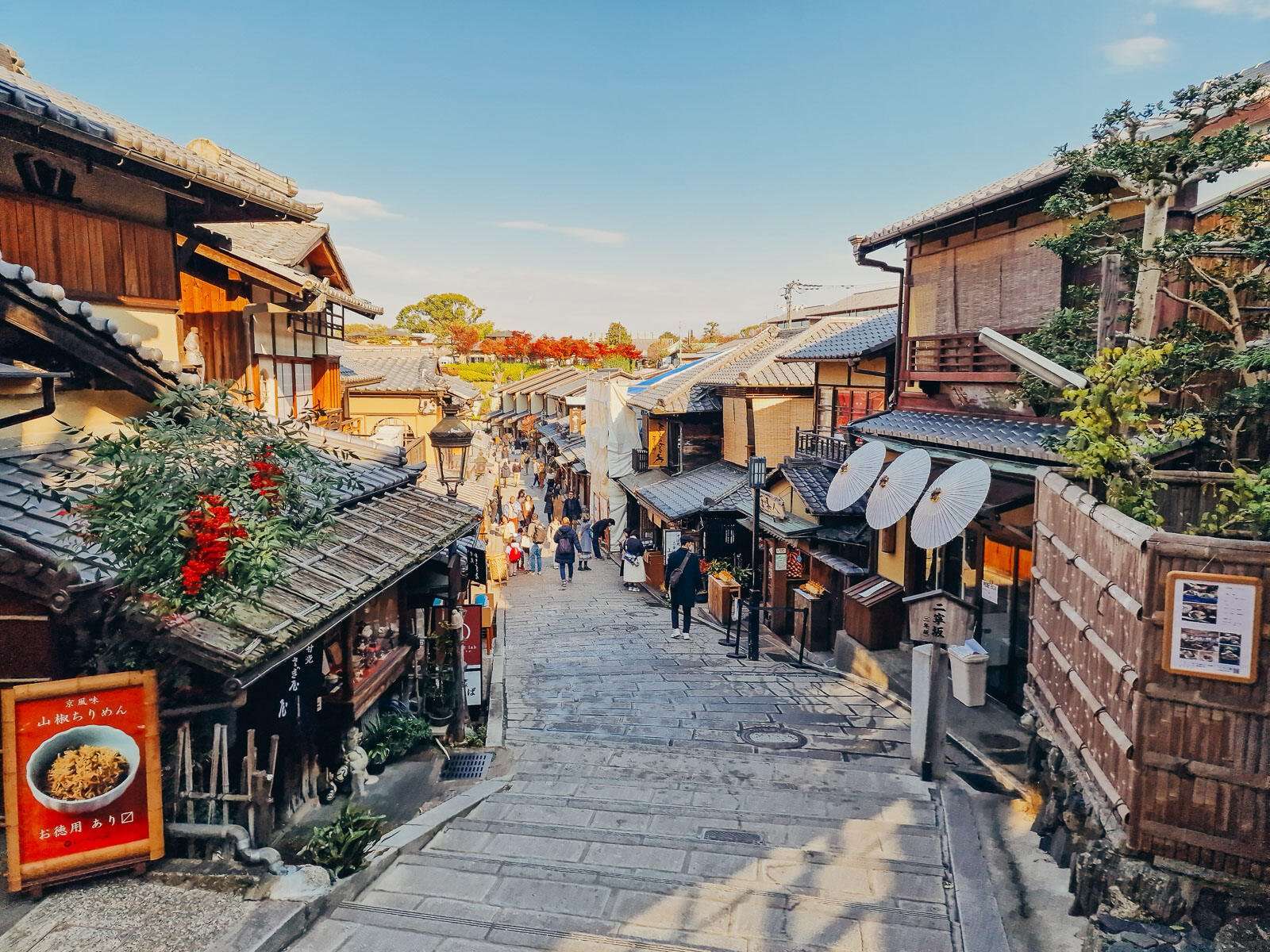
Of course one of the best things to do in Kyoto is to see the iconic and quintessential traditional Japanese old town.
The early morning is your chance to see Gion without the crowds and even if you felt like you saw a lot yesterday, I do think it’s a great chance to see this historic area without the throngs of people.
The most famous spots in Gion for photos are:
- Yasaka Pagoda (look for “Yasaka Pagoda photo spot” on Google Maps for the famous view)
- Ninenzaka – this is the famous street with traditional houses lining each side of the cobbled street (the steps at the end of the street marked “Ninenzaka photo location” on Google Maps is the famous photo view)
- Sannen-Zaka Path
- Any street or small alleyway – use this time to explore in the quiet of the morning!
If you’re a Starbucks fan, don’t miss the most unique Starbucks right here in one of the traditional houses in Gion. It’s located on Ninenzaka (where I mentioned above) and it’s a very unique experience to have a Starbucks in a timber-framed Japanese building and to be seated on tatami mats on the floor while you enjoy your coffee.
TIP: There is usually a big queue here and seating is often taken. We grabbed a coffee here around 8am after exploring for an hour and it was the perfect time – not too busy yet!
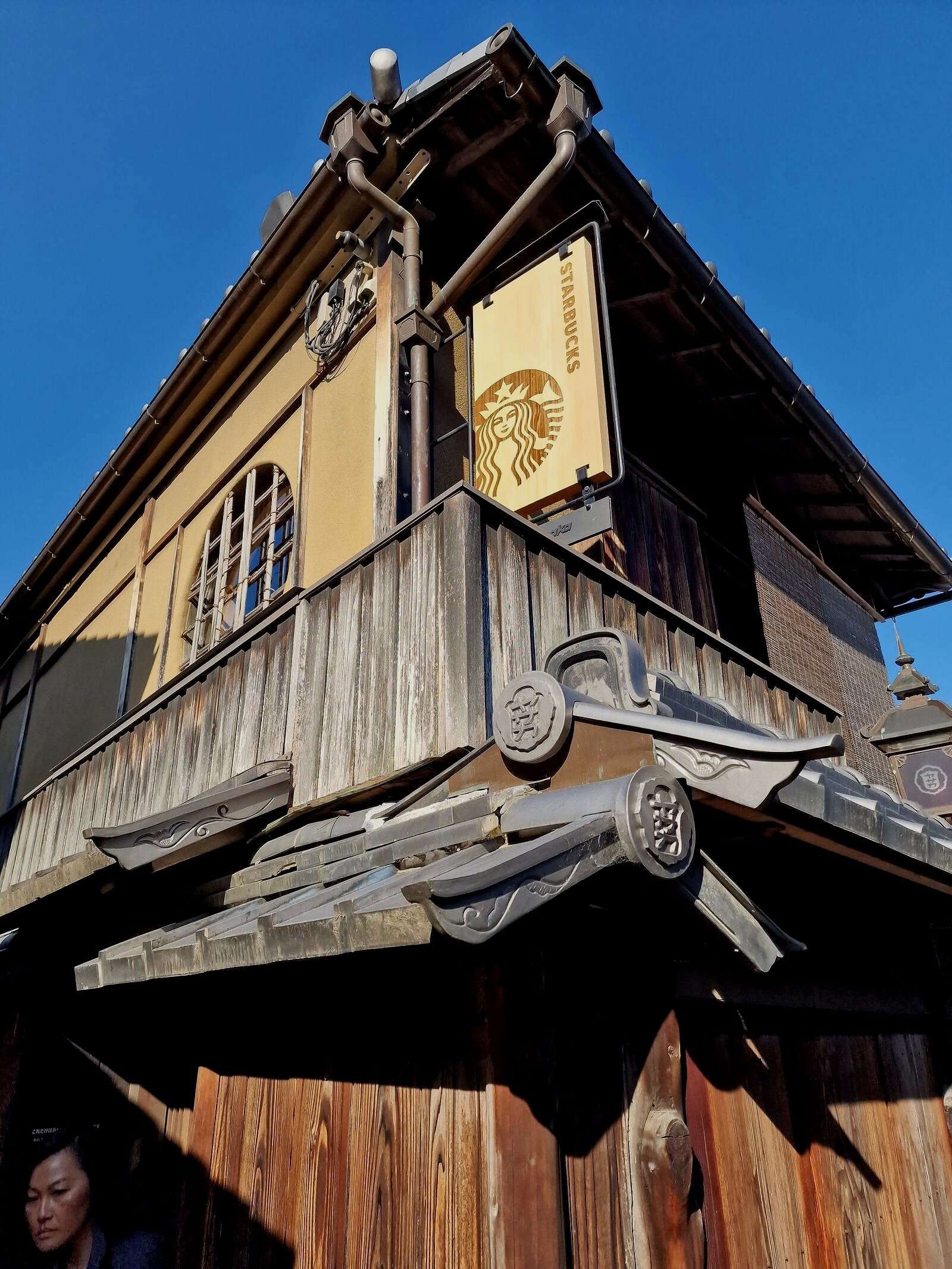
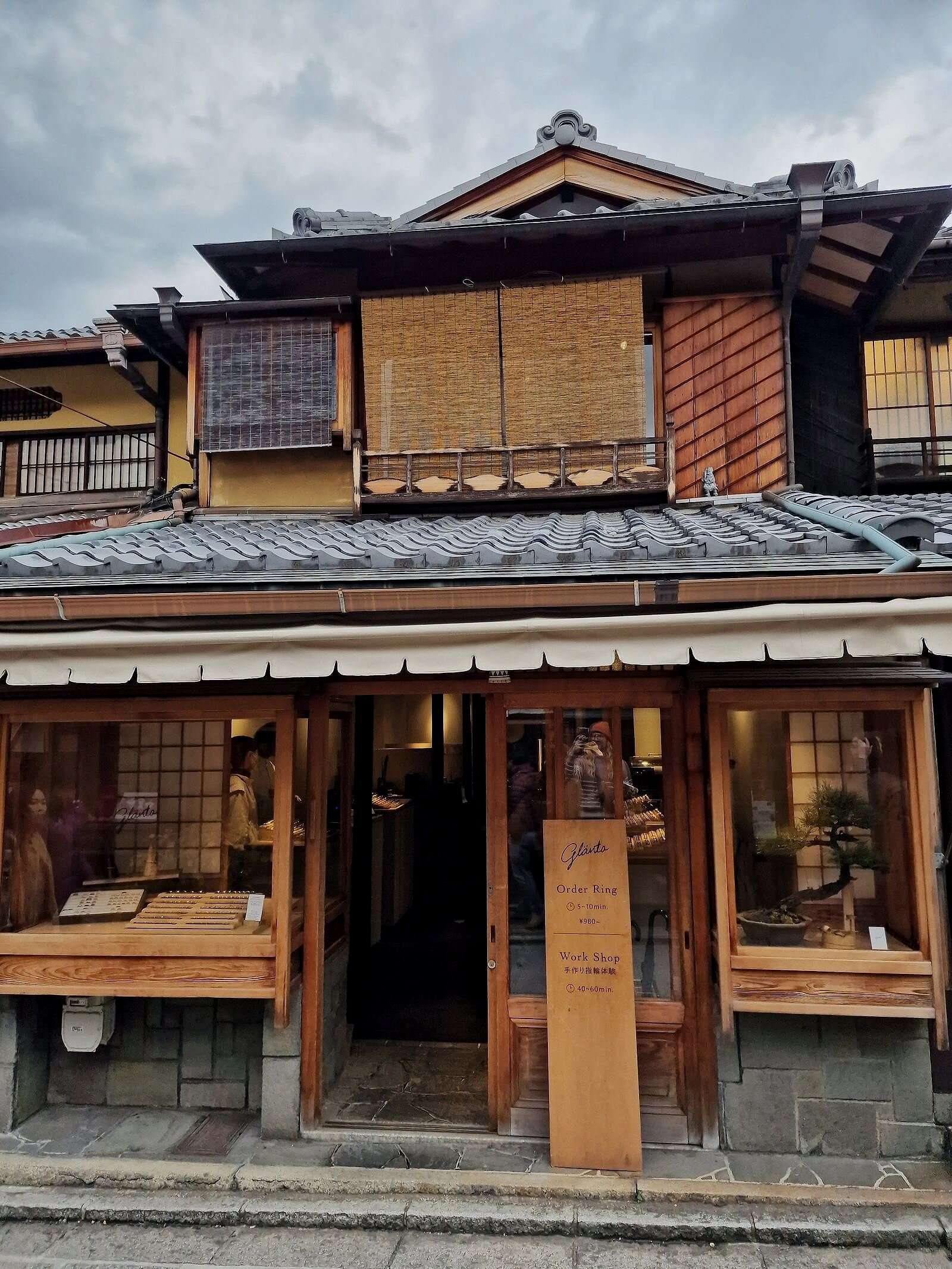
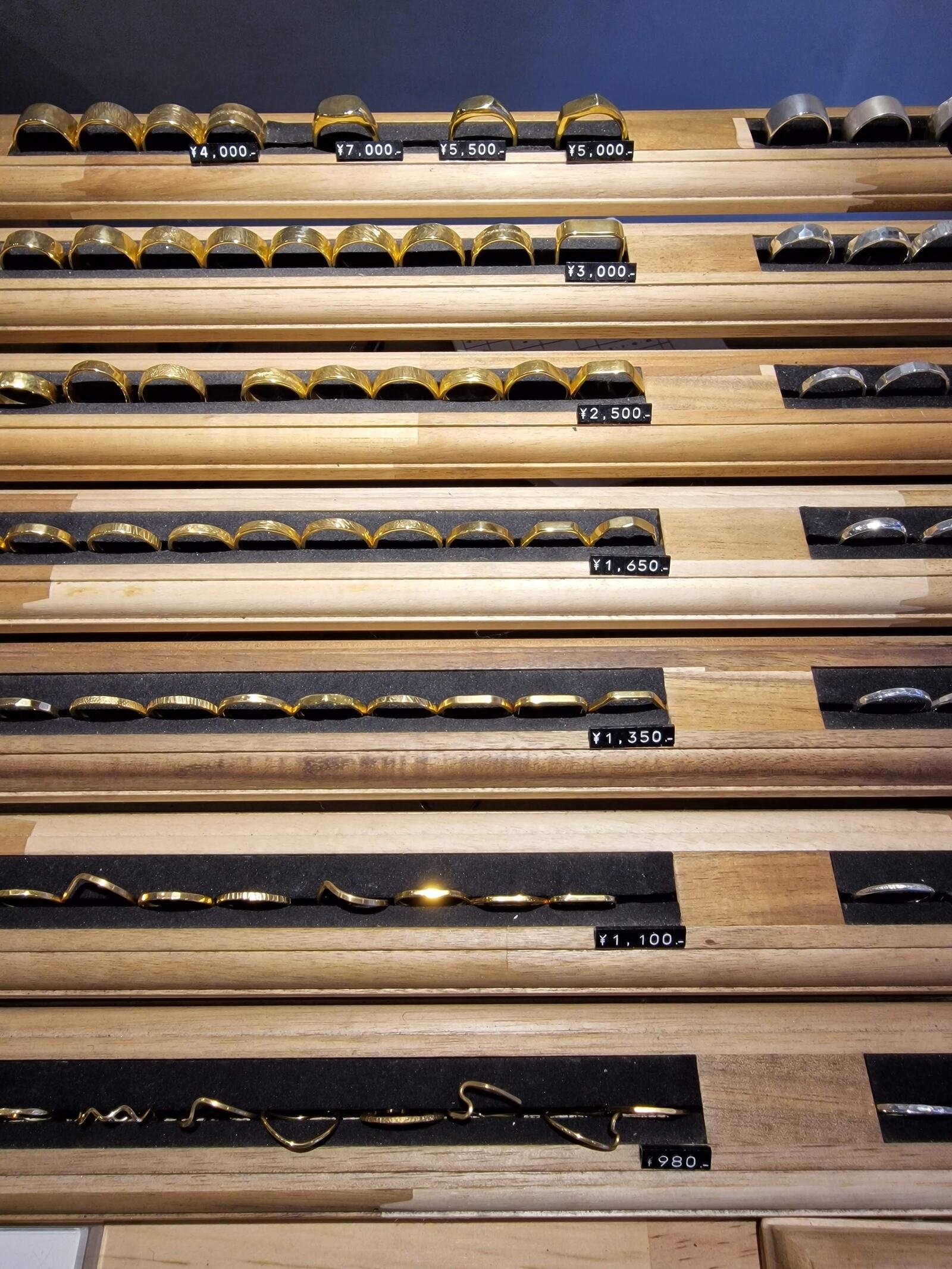
Another thing I loved doing here is on the same street as Starbucks, a little further down on the opposite side – a ring making shop called glänta.
From as little as 980 yen (£5.22) you can have a custom ring made there and then. The price depends on the thickness of the metal you choose and the decoration. We chose one of the mid sized bands with a matte finish and it cost 2000 yen (£10.65).
They make the ring right there in front of you and of course it’s completely unique as each one is handmade. It’s an amazing price and such a great, unique souvenir or gift for someone.
If you’d prefer to get outside of the old town in the morning, here are a couple of other temples I love but you will need to take transit to reach:
- Nanzen-ji Temple
- Eikandō Temple
- Hirano-jinja Shrine (best during cherry blossom season to see blossoms and torii gates)
- Kinkaku-ji (known as the Golden Temple in Kyoto)
- Rurikō-in Temple (best to visit for autumn colours)
- Daigo-ji Temple
- Kyoto Imperial Palace
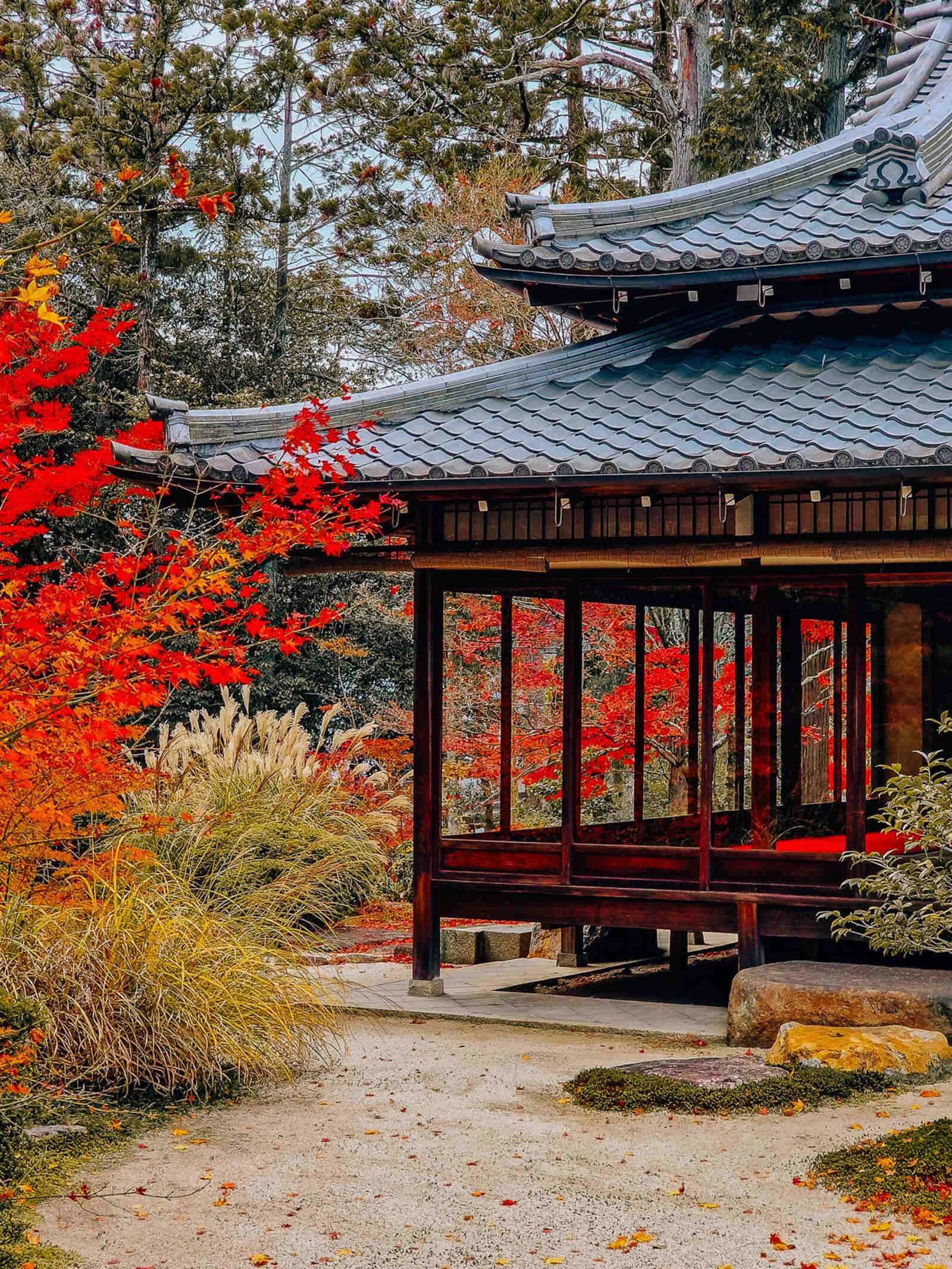
PM – Visit Nara and see the Nara deer
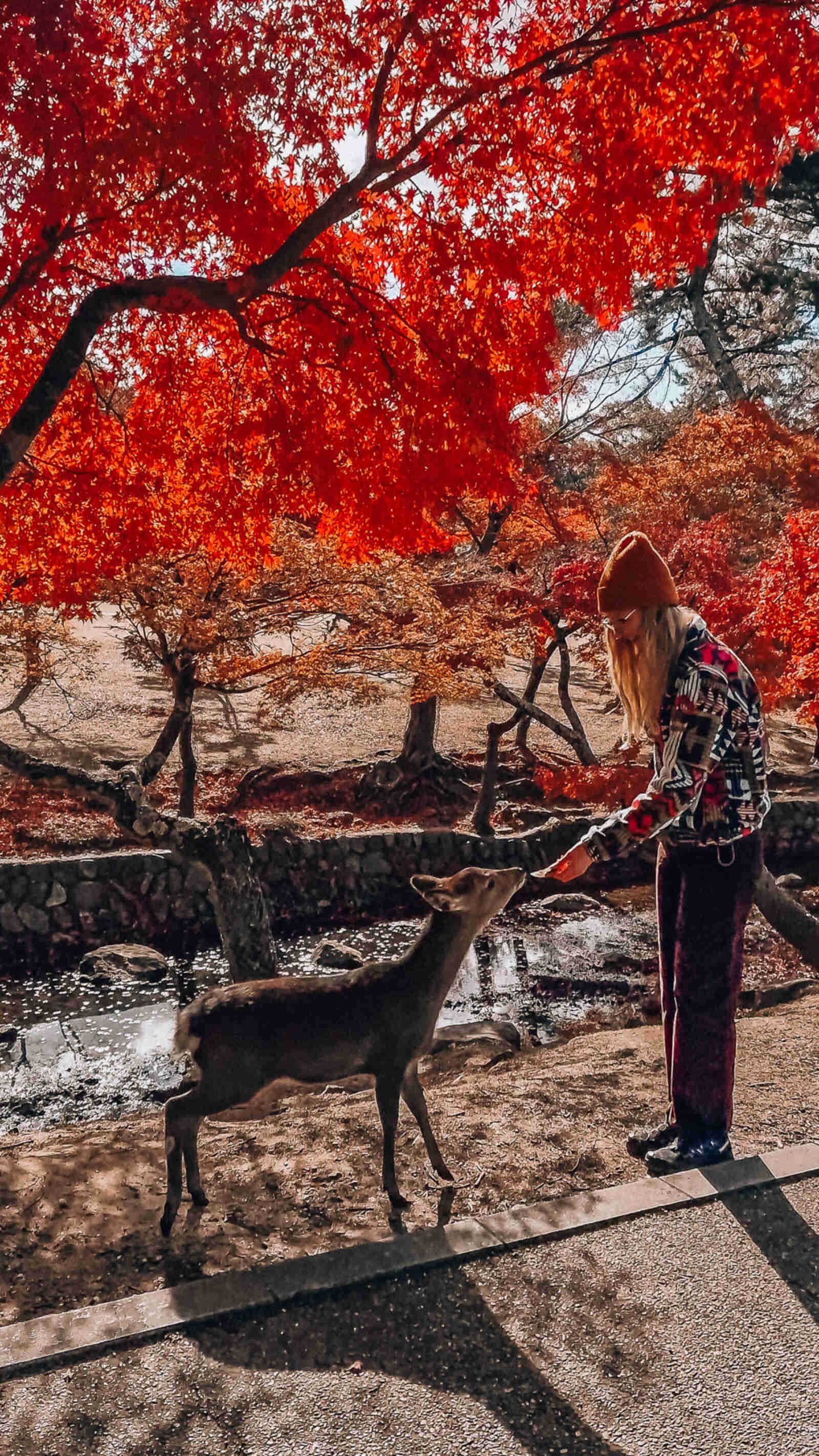
After a morning exploring Kyoto, it’s time to see the famous bowing deer in Nara – a must do for exploring Kyoto in 2 days!
Nara is one of the most popular day trips in Kyoto and for good reason! No Kyoto 2-day itinerary would be complete without seeing, feeding and bowing to the famous Nara deer!
How to get from Kyoto to Nara?
There are two ways to get to Nara from Kyoto and it’s easiest to get to Kyoto Station and choose one of these options:
1. The Kintetsu Limited Express from Kyoto Station to Kintetsu-Nara Station takes 34 minutes and brings you closest to the park entrance. However this train is only every hour and costs 1300 yen
2. The Nara Line from Kyoto Station to Nara Station takes 45 minutes and it’s a 10 minute walk to the park entrance. This train is every 30 minutes and costs only 780 yen
We chose to take the more expensive option that brought us closer to the park entrance as we were short on time. However, we took the longer, cheaper Nara Line back to Kyoto in the evening as we weren’t in a rush anymore.
Again Google Maps is a great friend and will direct you to the park area when you search “Nara Park”. But if you come out of Kintetsu-Nara Station, turn right and keep walking up the road – you’ll see the deer!
This is what surprised me the most, the deer are literally free roaming in the town! They cross the road, they sit on the pavement, they are really the true residents of Nara!
You can buy food for the deer to bring them close to you, they can eat the rice cakes/crackers that are for sale from vendors in the park but please don’t feed them anything else! A pack of 10 crackers costs 200 yen. The crackers are big so I recommend breaking them in half so there’s more to go around.
The deer are very used to people but approach gently with the food in your hand, bow first, they know to bow their head and then give them the food. Don’t tease them or pretend to have food.
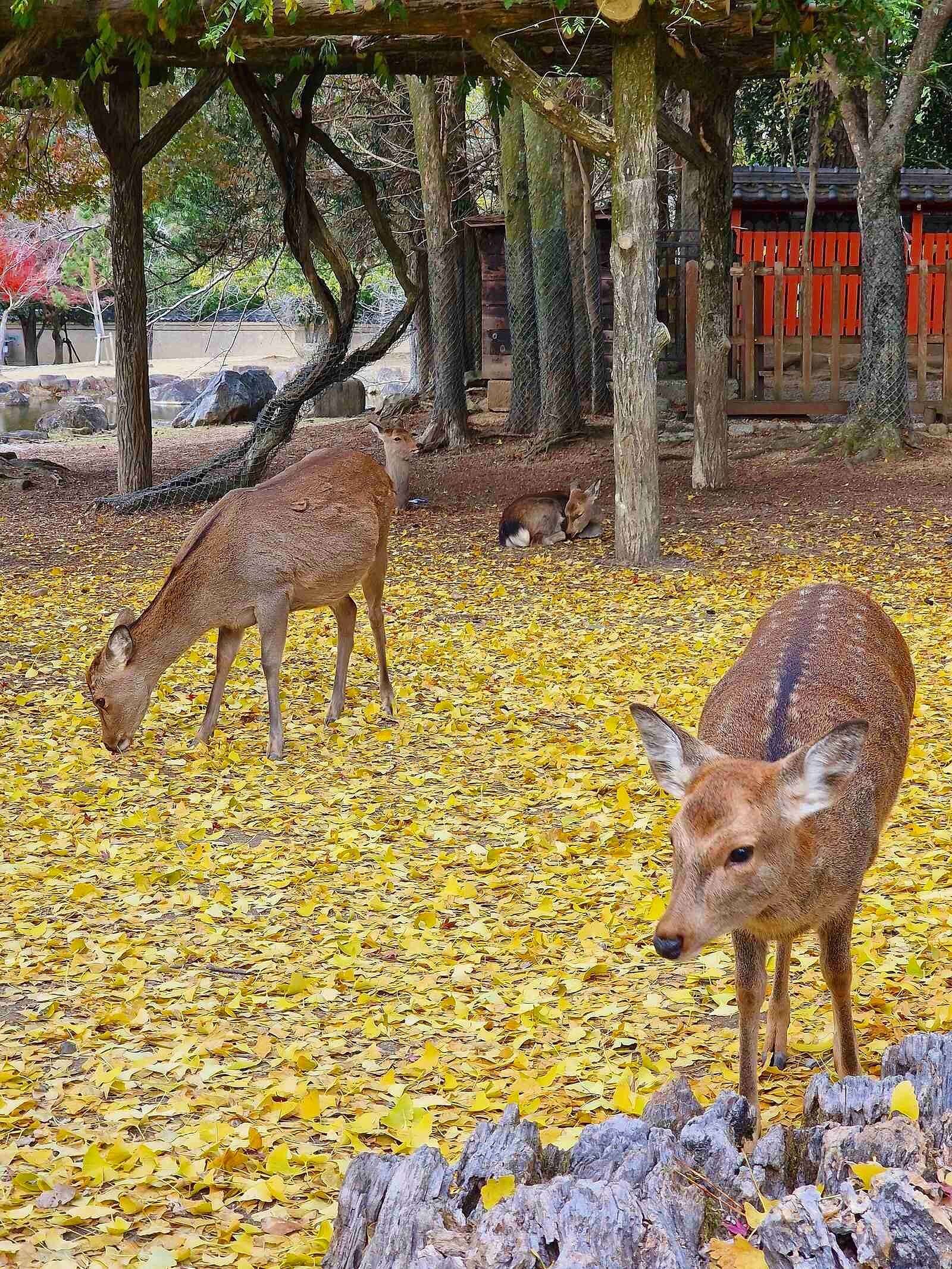
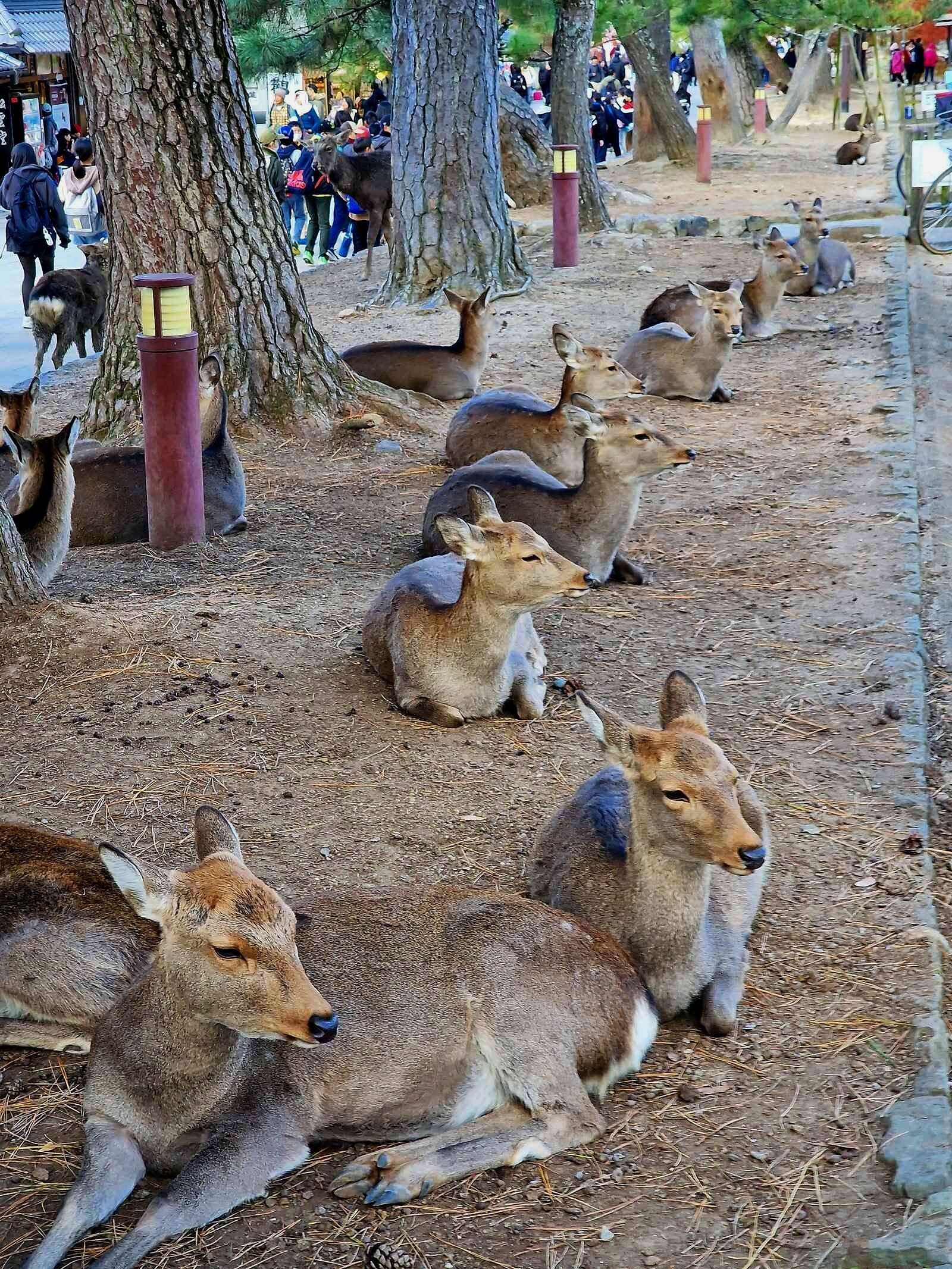
We saw some people getting butted by the deer but they chased them or were showing them food but not giving it. These are still wild animals so common sense is key!
The further into the park you go, the more beautiful and rural it is. I was a bit disappointed by the area near the road at first but once I walked in further I loved it and the autumn colours were incredible!
TIP: if you buy food, don’t give it to the first deer you see. I didn’t realise how HUGE Nara Park is and it gets more beautiful the further in you walk, away from the crowds near the entrance. Save some of your food for the deer further in.
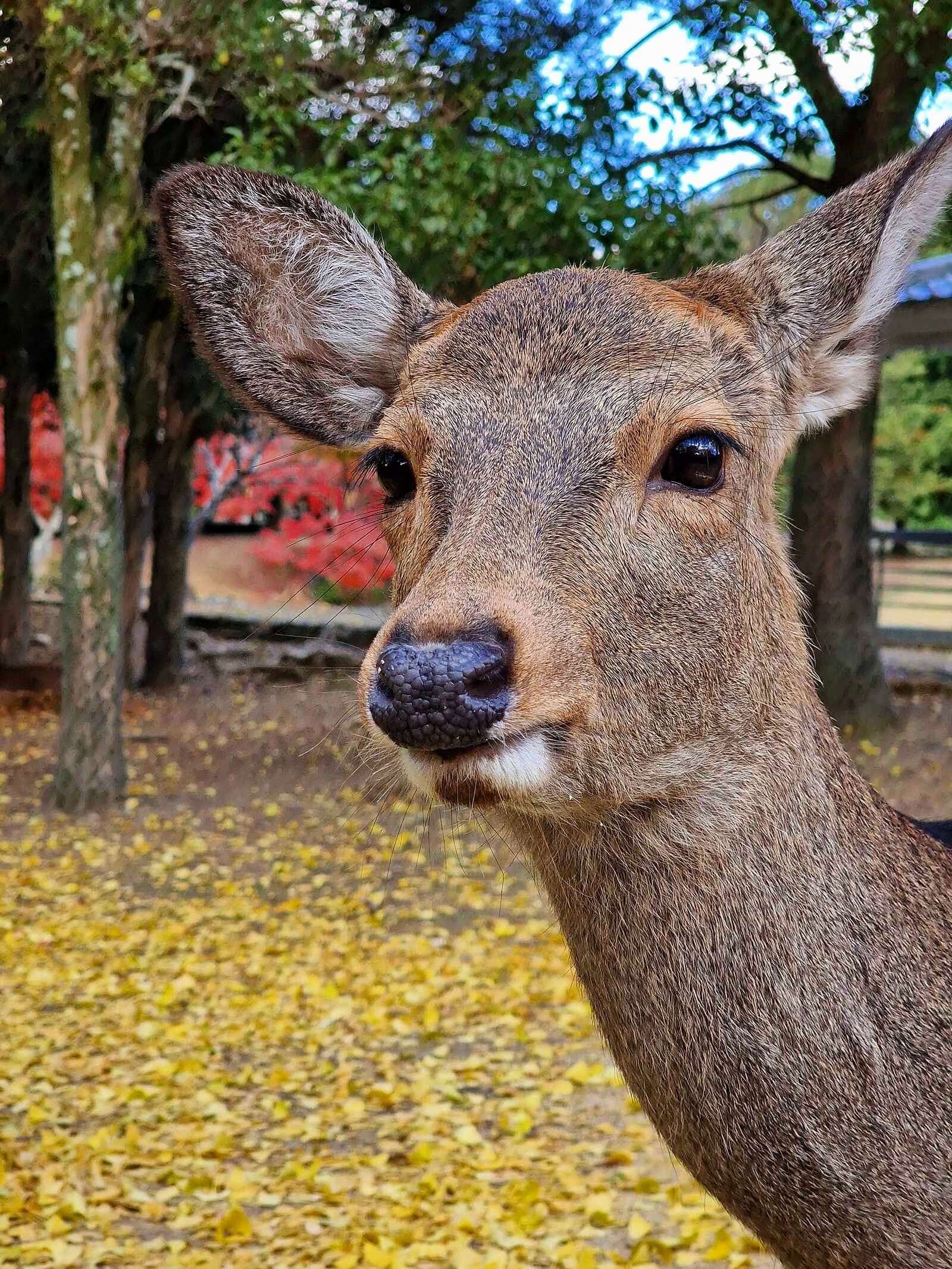
Looking to spend more time in Nara, here’s how we spent an afternoon there:
- Watch them make traditional matcha mochi rice cakes at Nakatanidou. This is a sweet shop where you can try traditional, fresh mochi cakes and they also “beat” the mochi in shows every few hours.
- Yoshikien Garden – we stumbled on this stunning Japanese garden while exploring the streets of Nara. It’s free to visit and absolutely beautiful
- Mt. Kasuga Primeval Forest – definitely more of a trek but this is a beautiful ancient trail of trees, waterfalls and Buddhist statues which is gorgeous in good weather
Dinner – where to eat in Kyoto
Head back to Kyoto for dinner, you can check out the list I shared on yesterday’s itinerary.
If you’re heading on to Osaka from Nara (as Nara is halfway between the two cities and well connected to both) then I highly recommend visiting Menya Nosuta for the biggest and best value serving of amazing ramen I’ve ever had!
Kyoto 2 days itinerary: FAQs
Is Kyoto expensive?
I have always found Kyoto to be quite expensive, especially compared to neighbouring Osaka which is much cheaper.
However, as with anywhere, it depends on where you stay, what you eat etc and it’s certainly possible to visit Kyoto on a budget. Especially as many of the famous shrines and attractions are so cheap to visit.
What is the best time to visit Kyoto?
Spring or autumn are the best time of year to visit Kyoto. Cherry blossom season tends to be busier although fall is also gaining popularity particularly in Kyoto where there are lots of aesthetic locations.
Do you need more time in Kyoto or Osaka?
I would suggest more time in Kyoto to allow for day trips such as Arashiyama or Nara.
However Osaka is a foodie haven and there are plenty of day trips from Osaka too, so it’s really up to you and what you would like to include on your itinerary.
How many days is enough to visit Kyoto?
4-5 days is probably ideal, I would love to spend a week there to allow day trips further afield such as Lake Biwa or Kurama.
Is Kyoto a walkable city?
Yes and no. The Gion area and generally many of the shrines and temples in the east of the city are very easily reached. And the city itself is good for pedestrians to navigate.
However some of the distances are longer and not walkable such as getting from Kyoto Station to Gion which is a 45 minute walk. Depending on where you stay, walking distances could be quite far. However the buses in Kyoto are very regular and easy to use.
Which part of Kyoto is best to stay?
Many people want to stay in the Kyoto Gion area to experience a traditional Japanese guesthouse, however the prices in Gion are the most expensive in the city.
I like Omiya as it’s well connected by bus and train to the rest of Kyoto.
When looking for accommodation in Kyoto, I would suggest checking routes you plan to take to see if it’s easy to navigate, either on food or with public transit.
Summary: Kyoto itinerary 2 days
I hope this itinerary has helped you plan what to see in Kyoto in 2 days and shown you what is possible to do even in that short space of time.
There is so much to see and do in Kyoto, and everywhere else in Japan, that it can feel overwhelming to plan just a 2 day itinerary for Kyoto that covers all the must see in Kyoto spots. But when you’re planning to visit Kyoto in 2 days, the city is so beautiful, just know that whatever you see and do will be memorable!
I hope you have an amazing trip and if you want to get this itinerary in a printable, offline itinerary to take with you, just drop me a message – offline copies are available for $10.
Pin for later to plan your trip!
